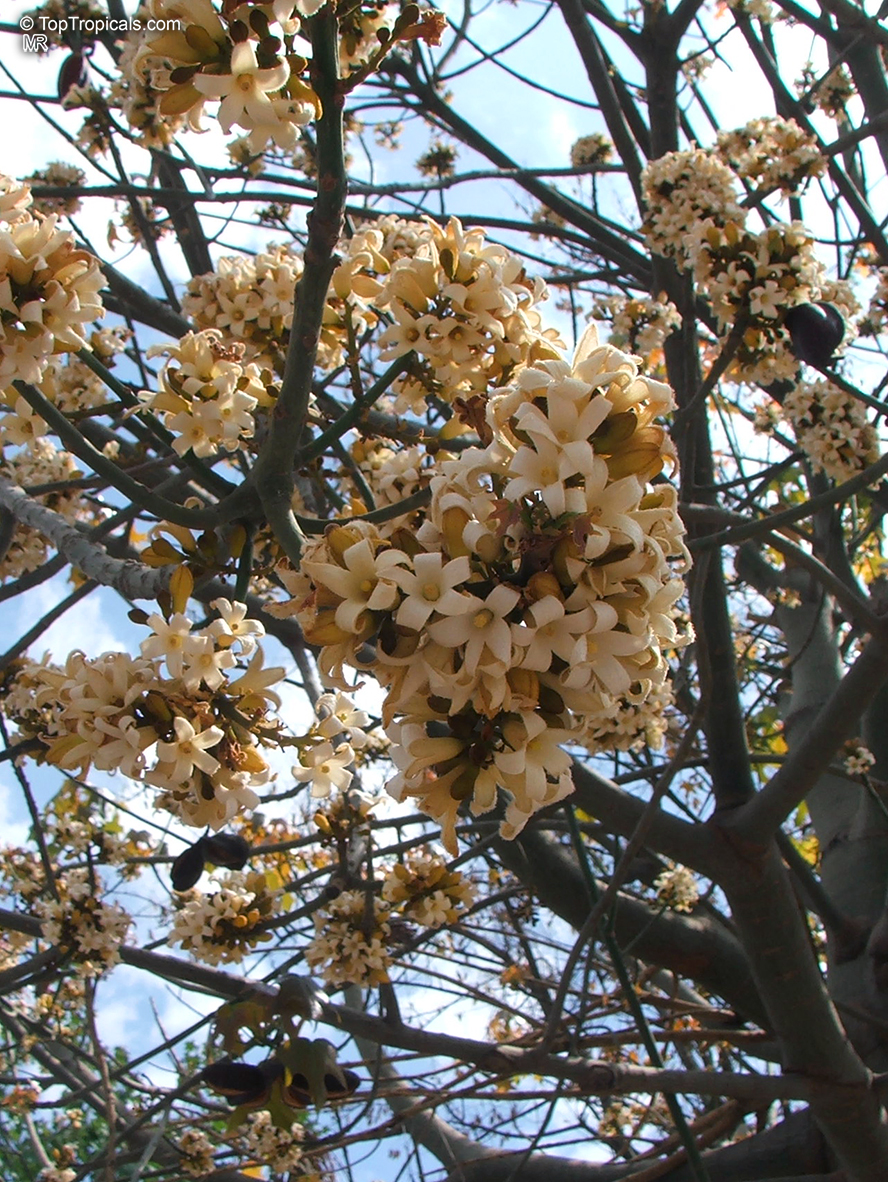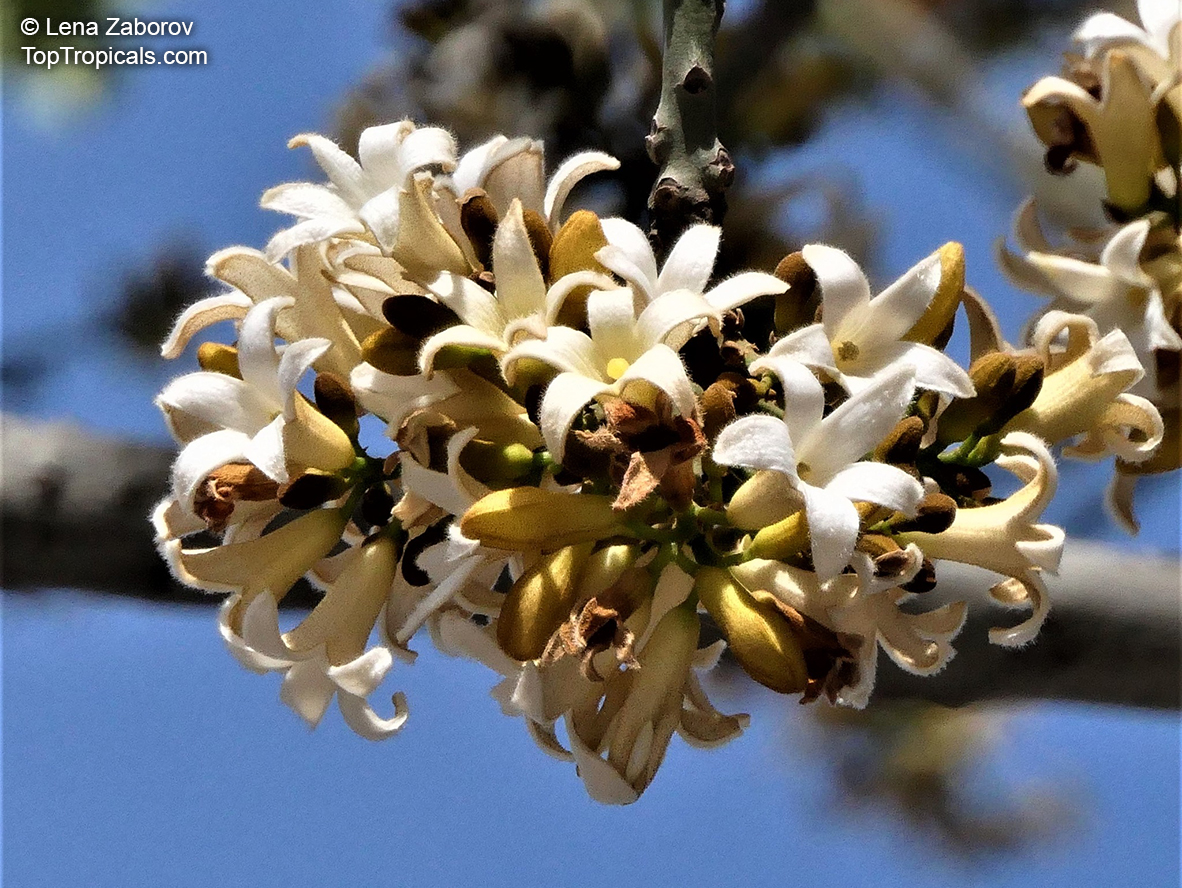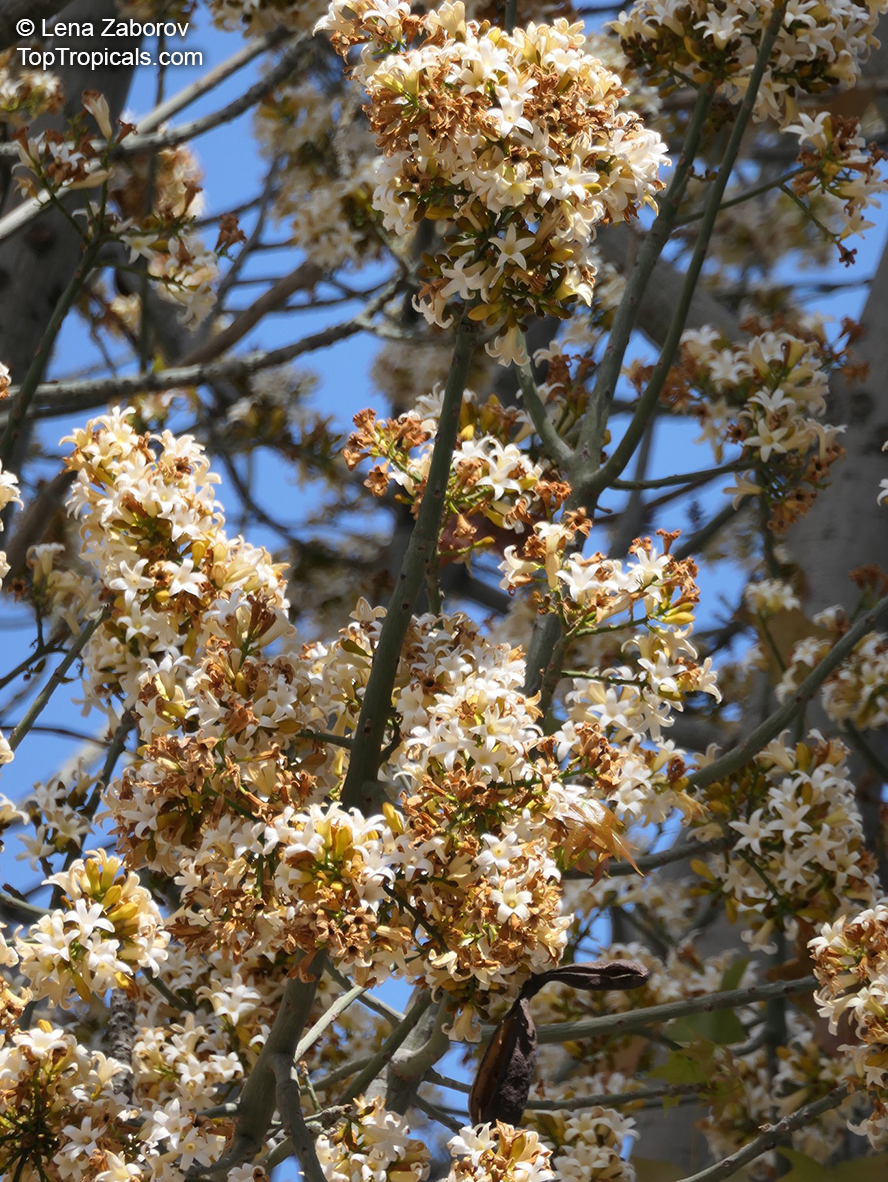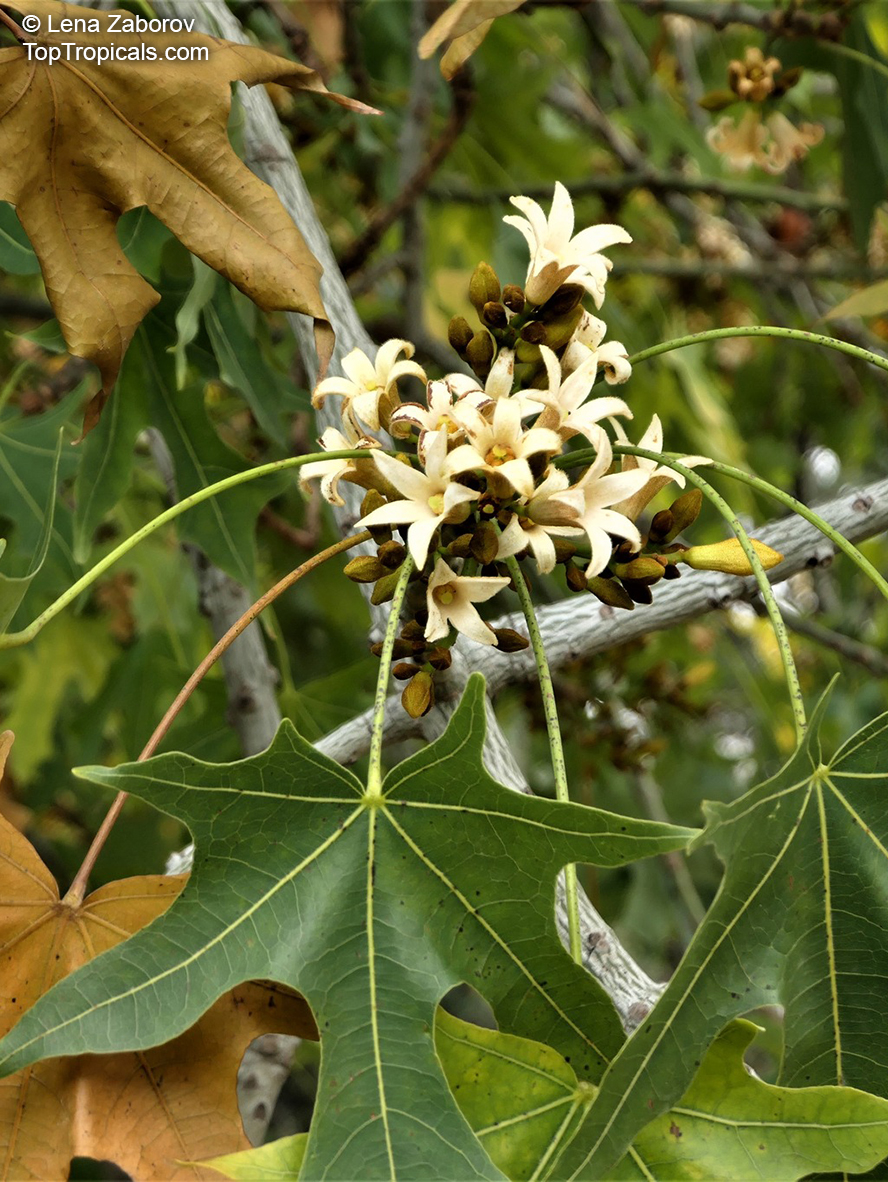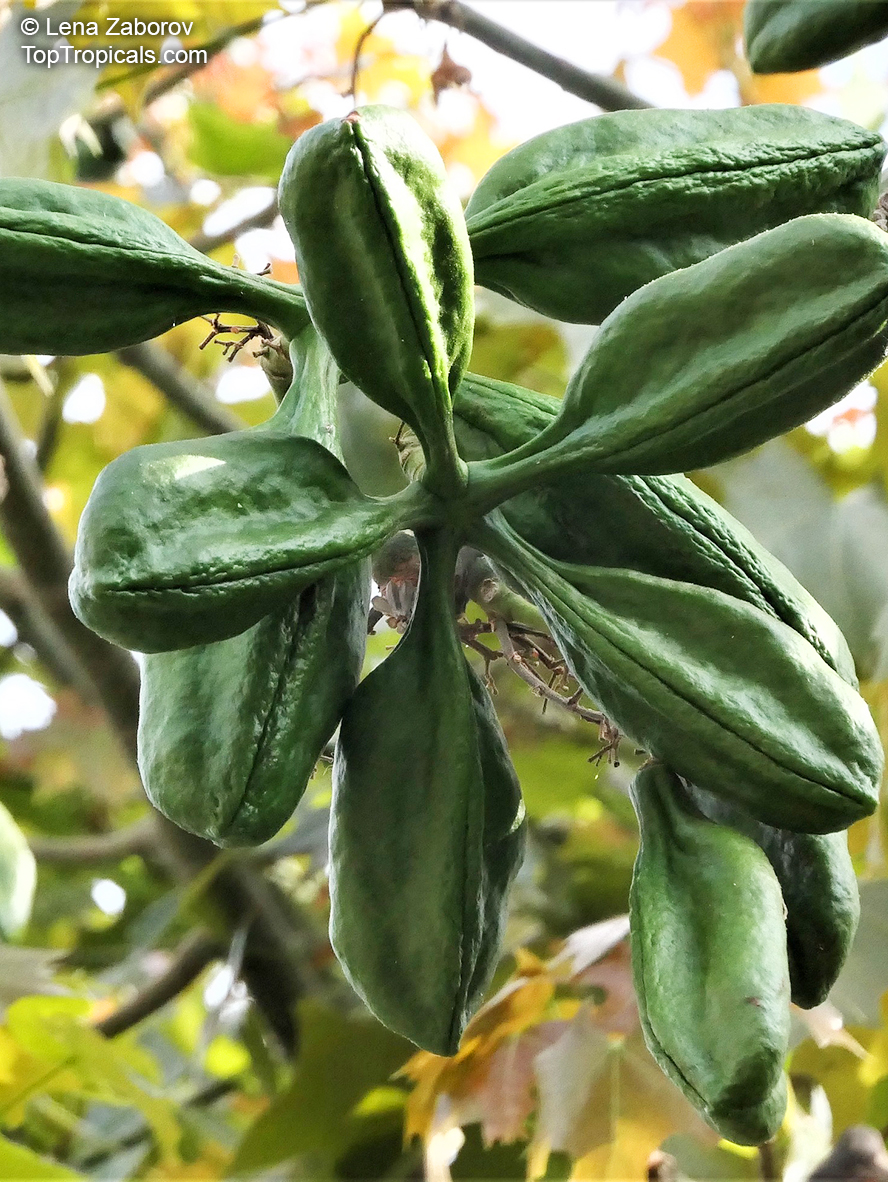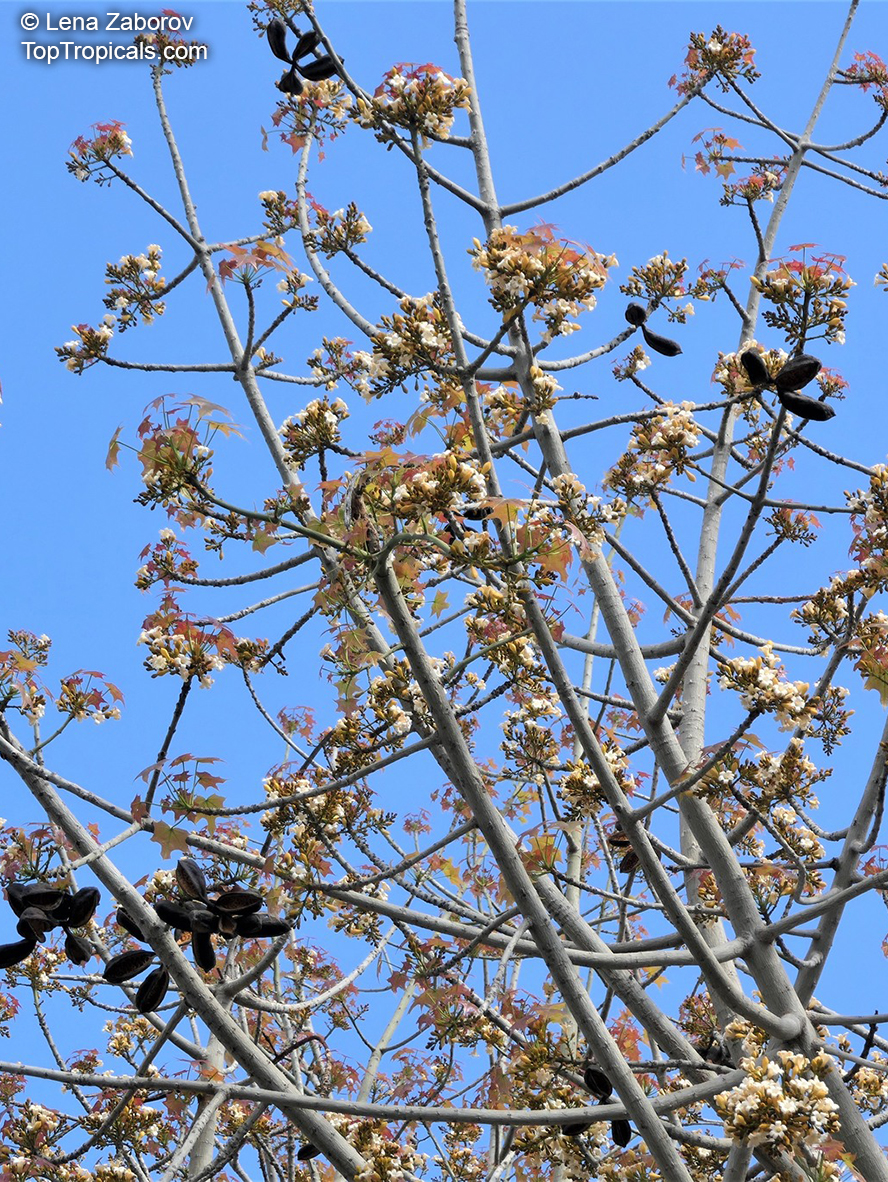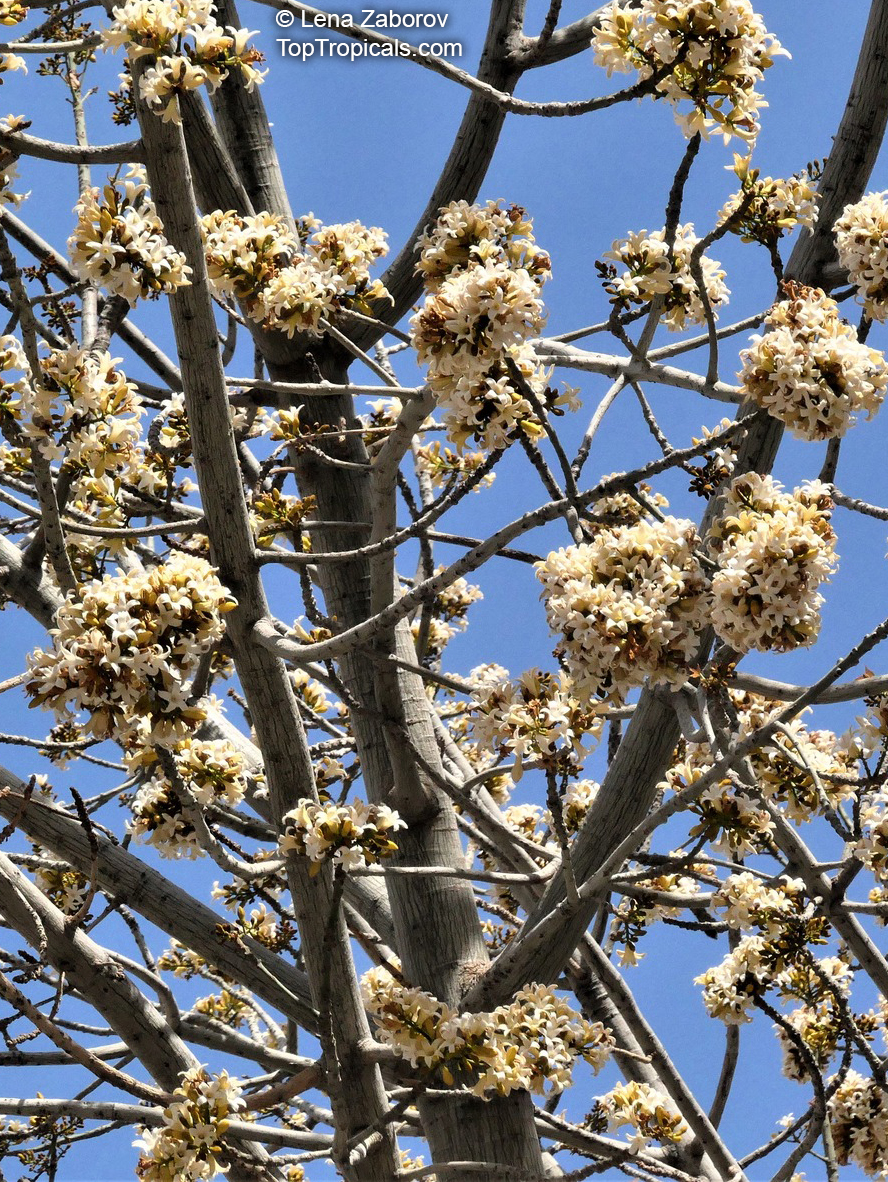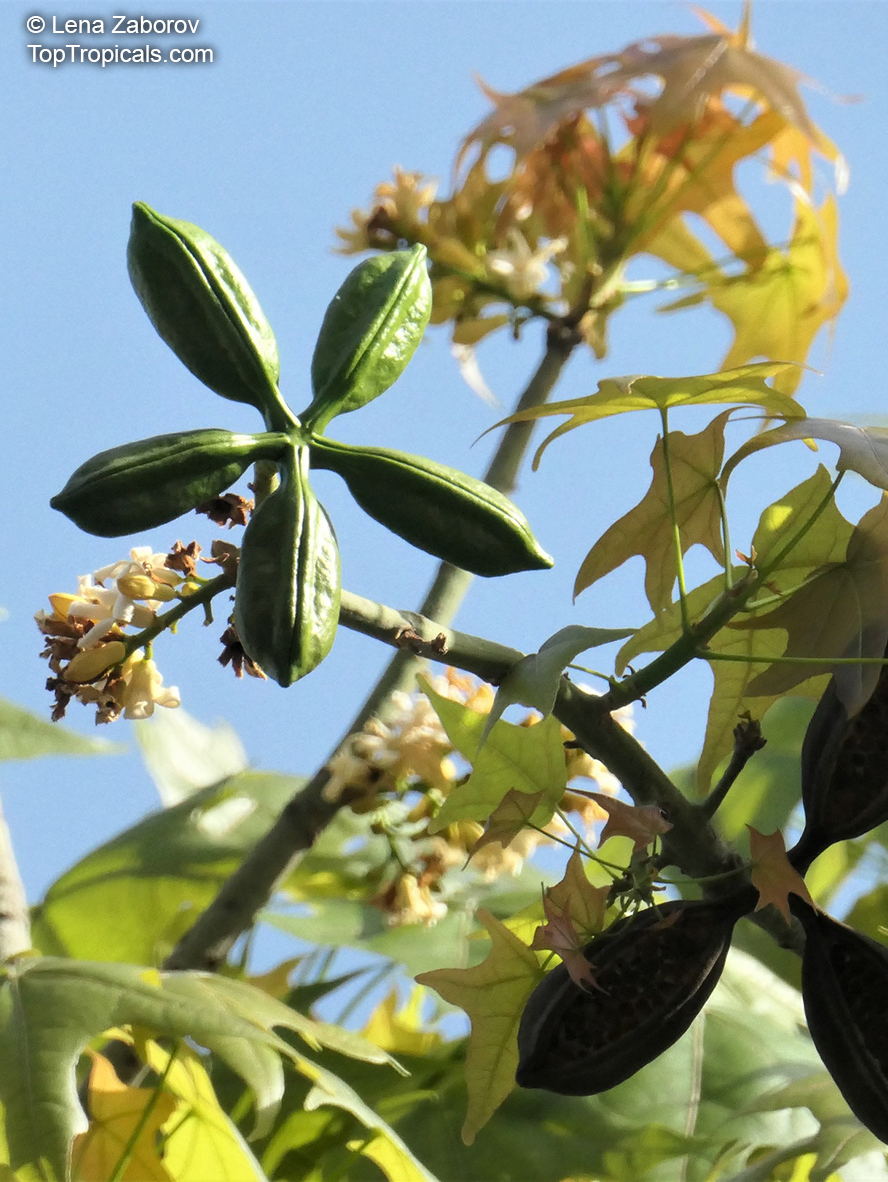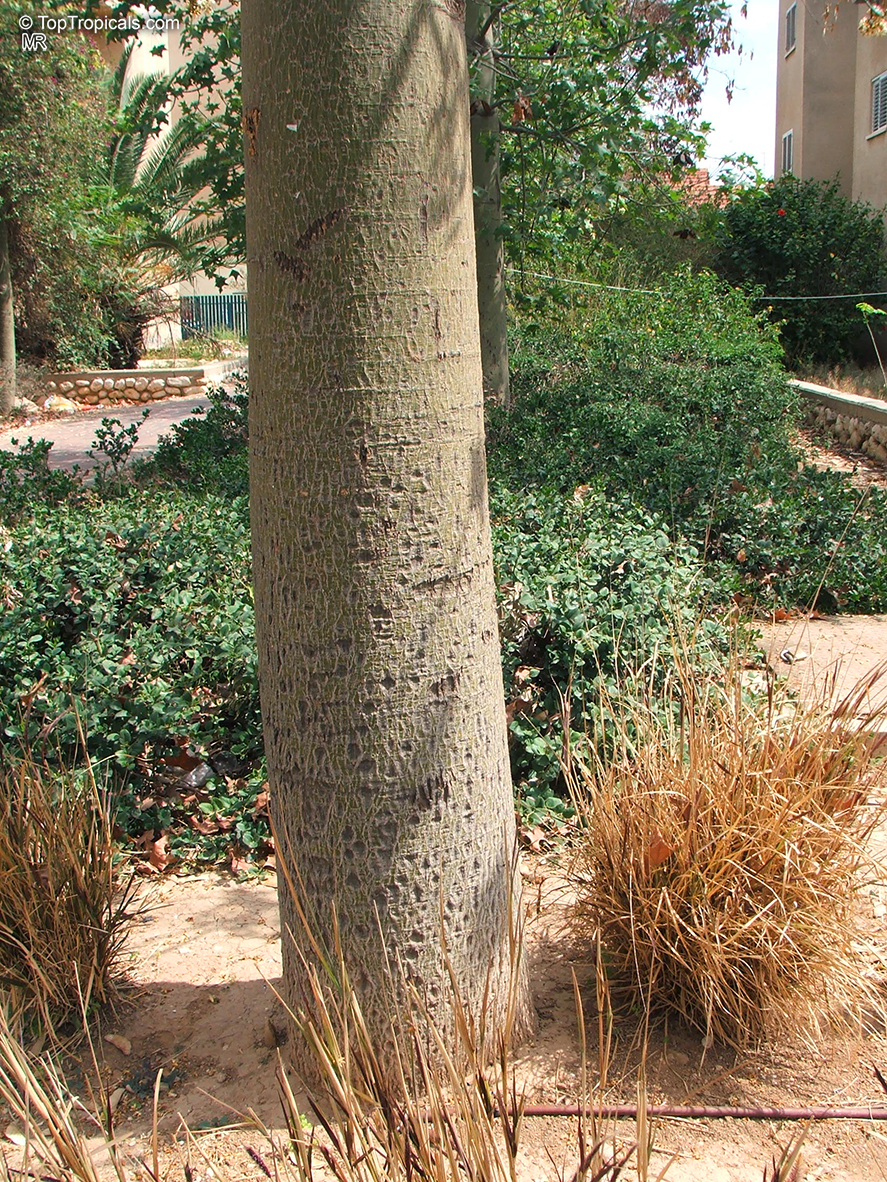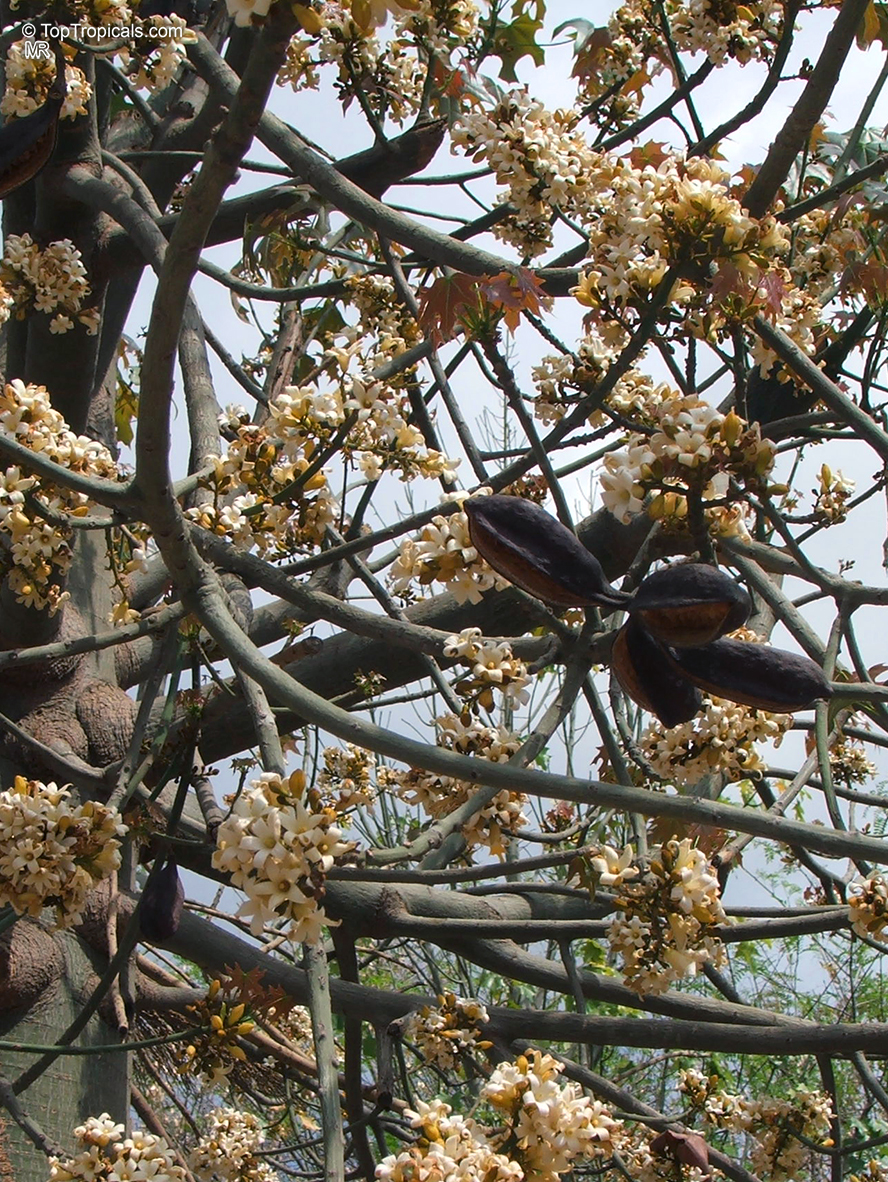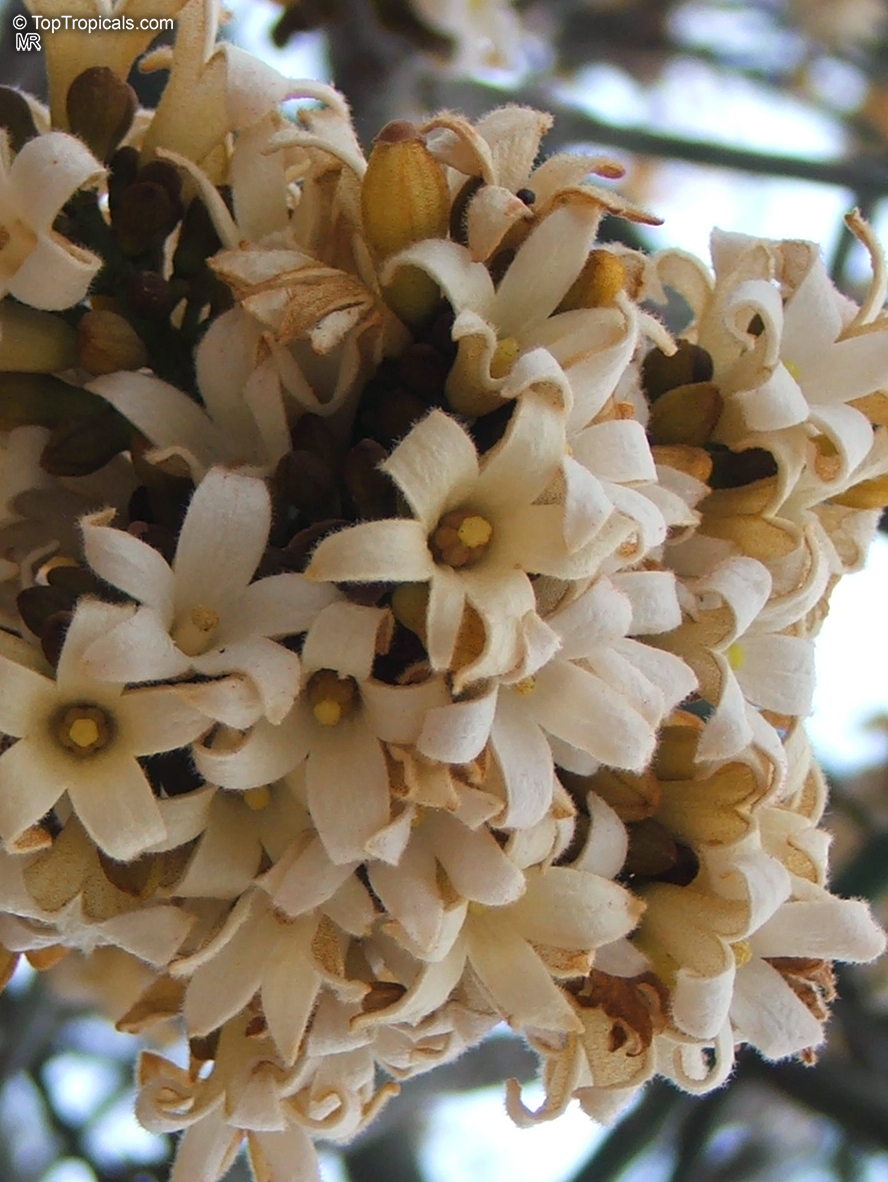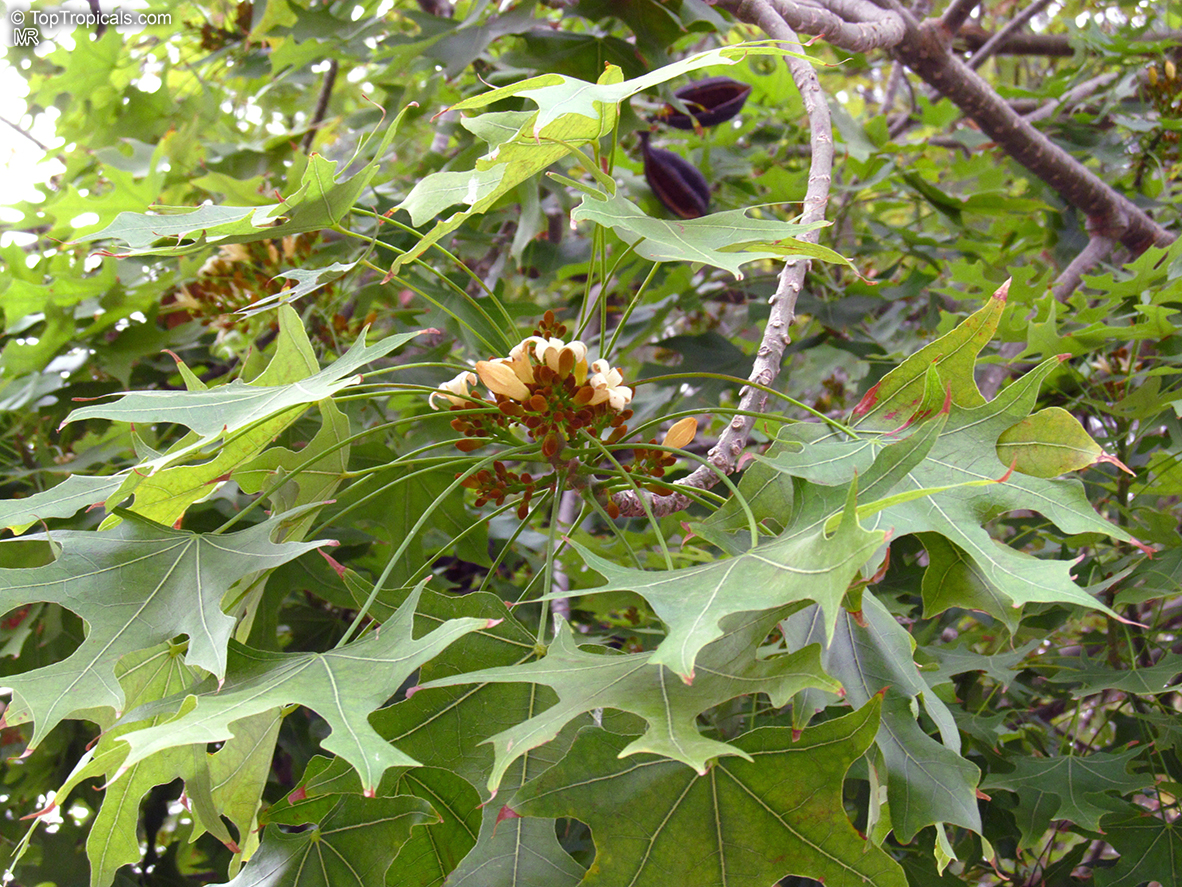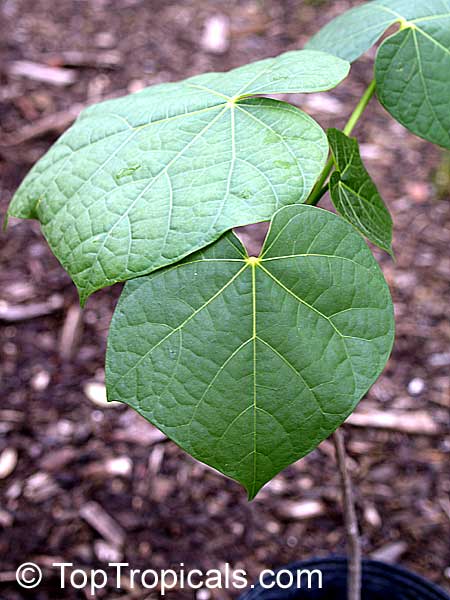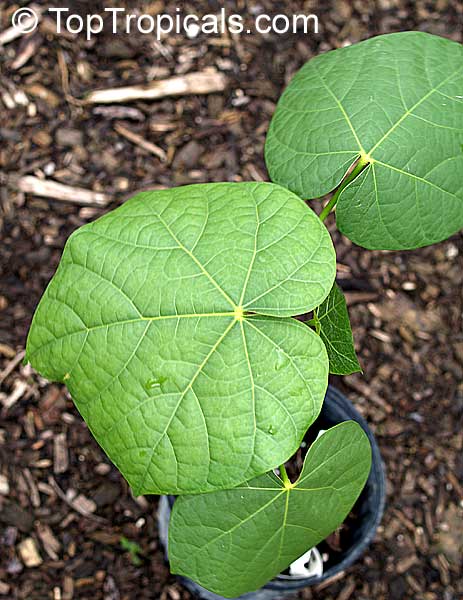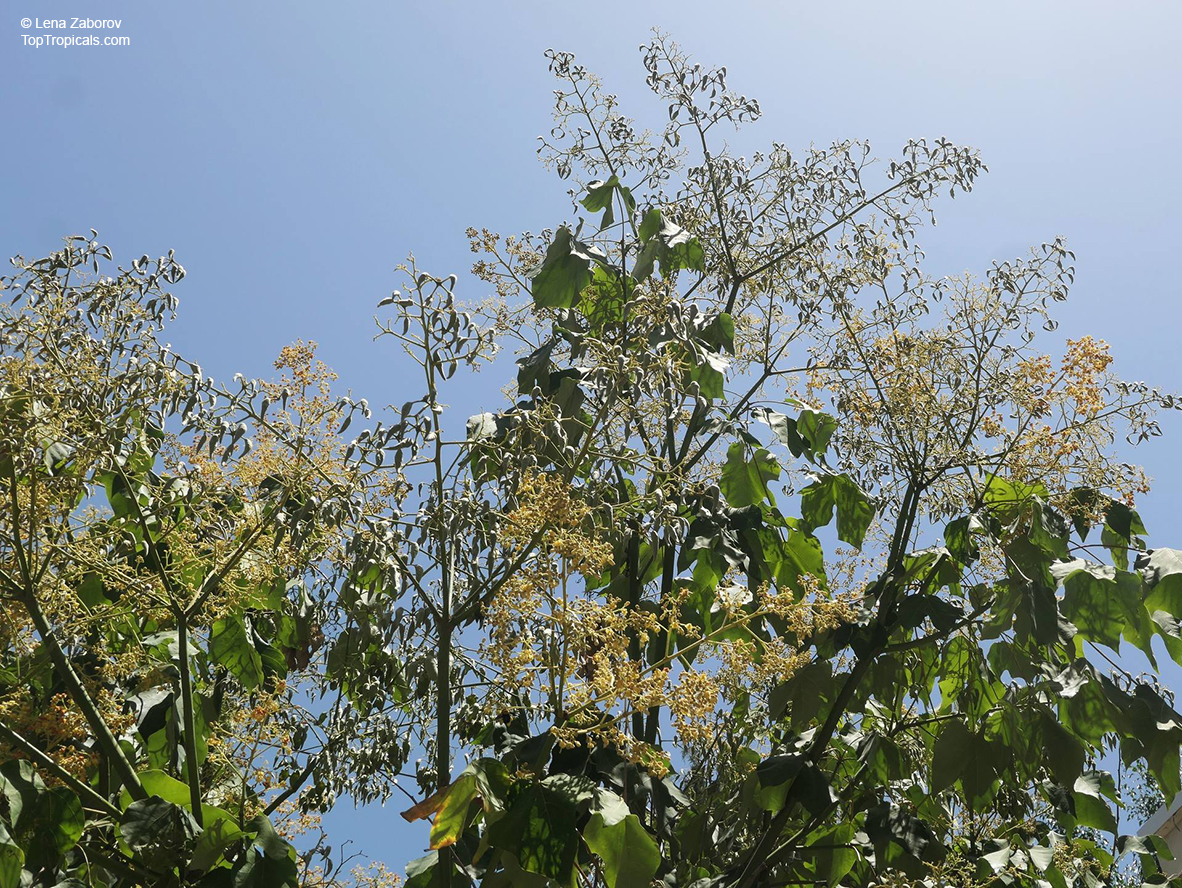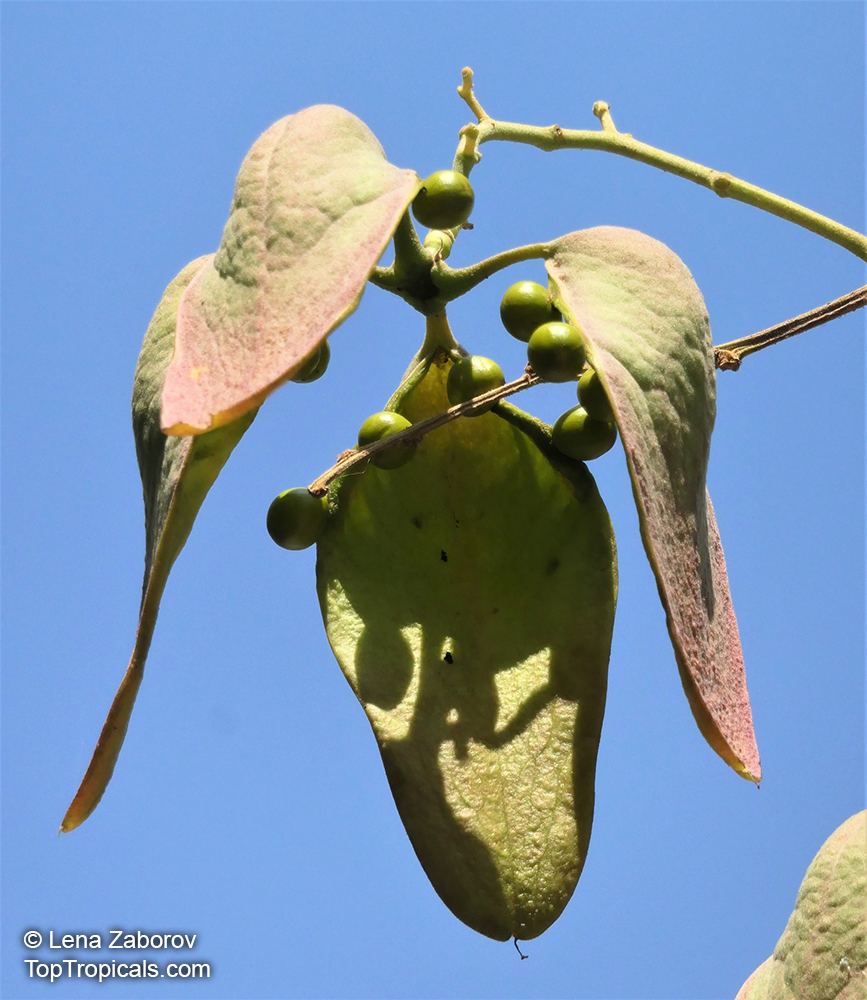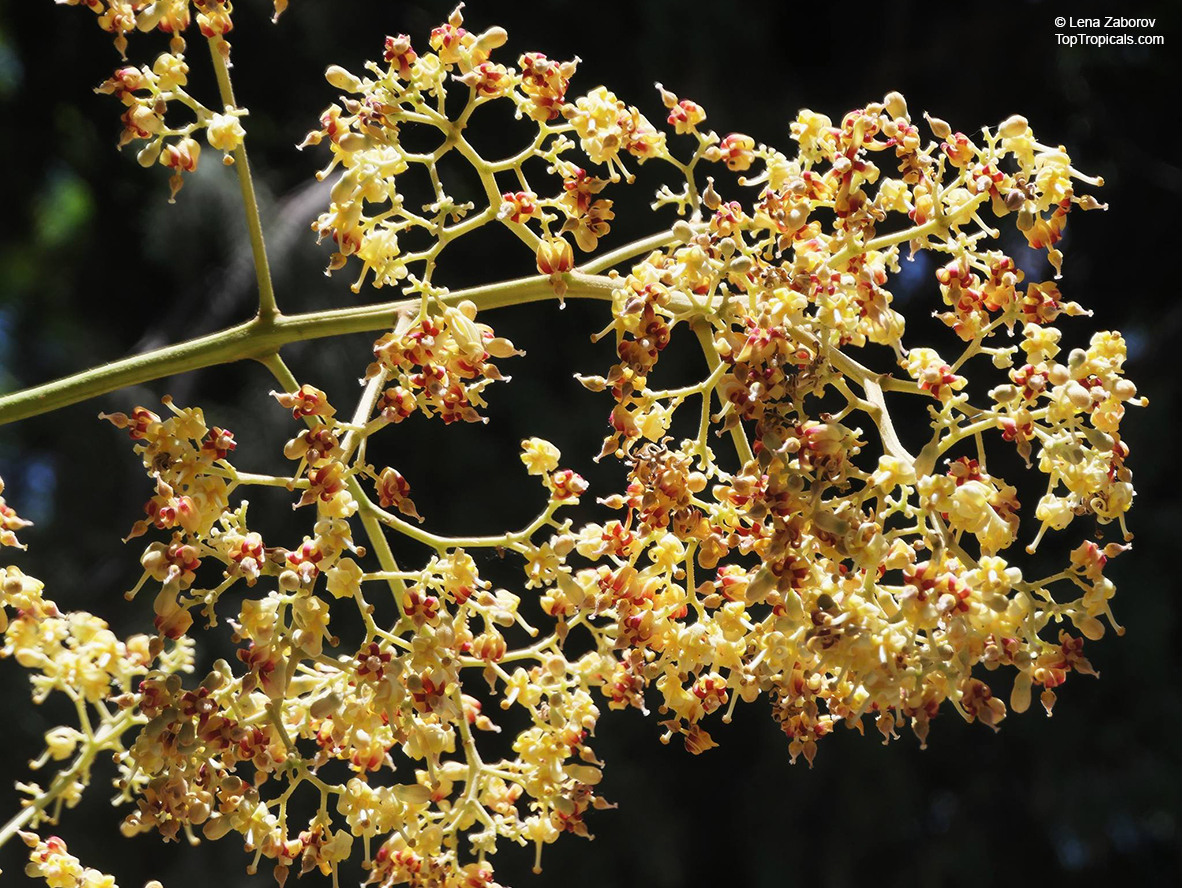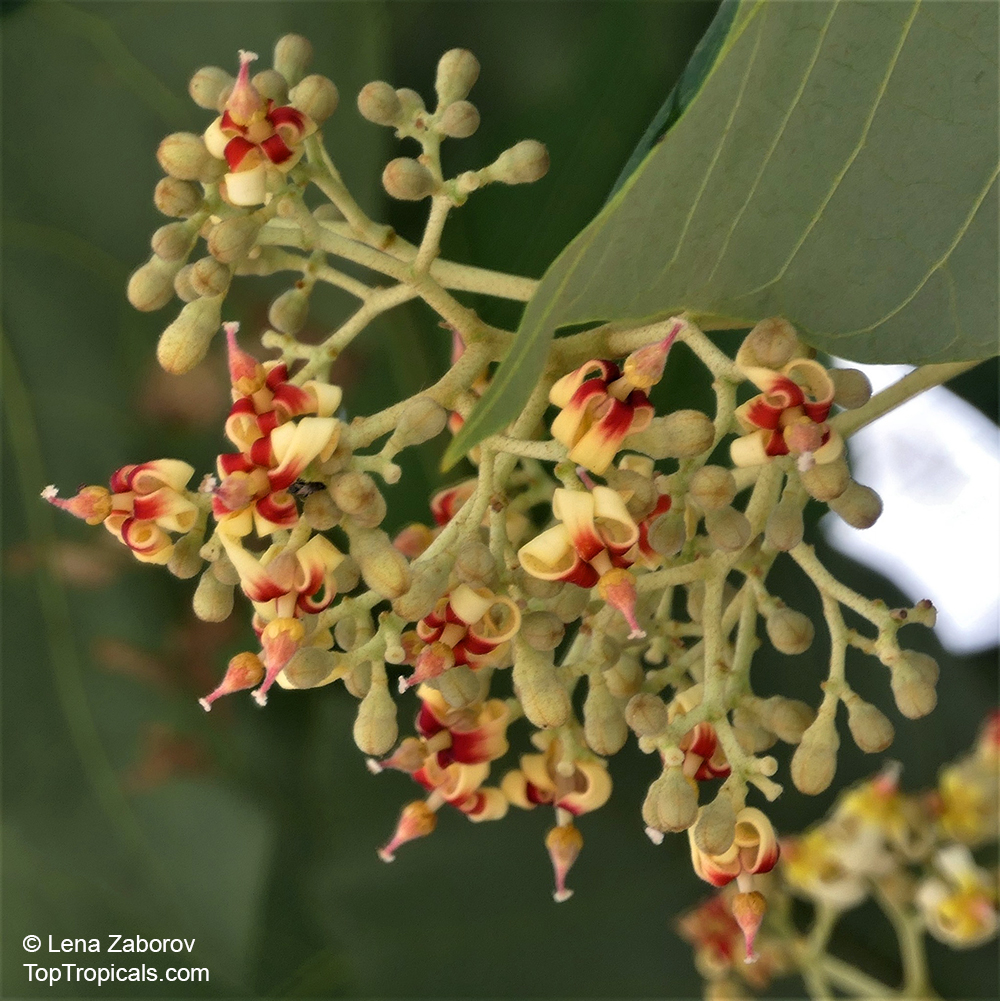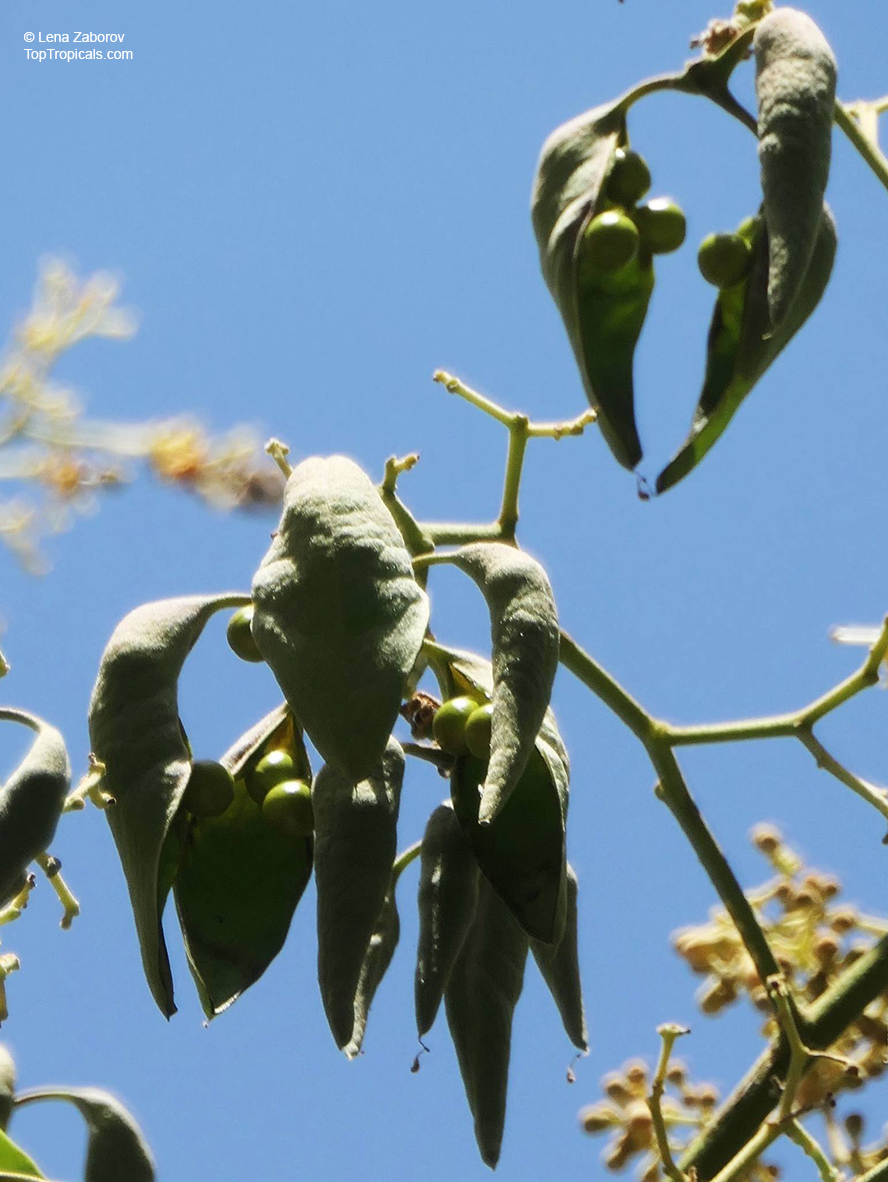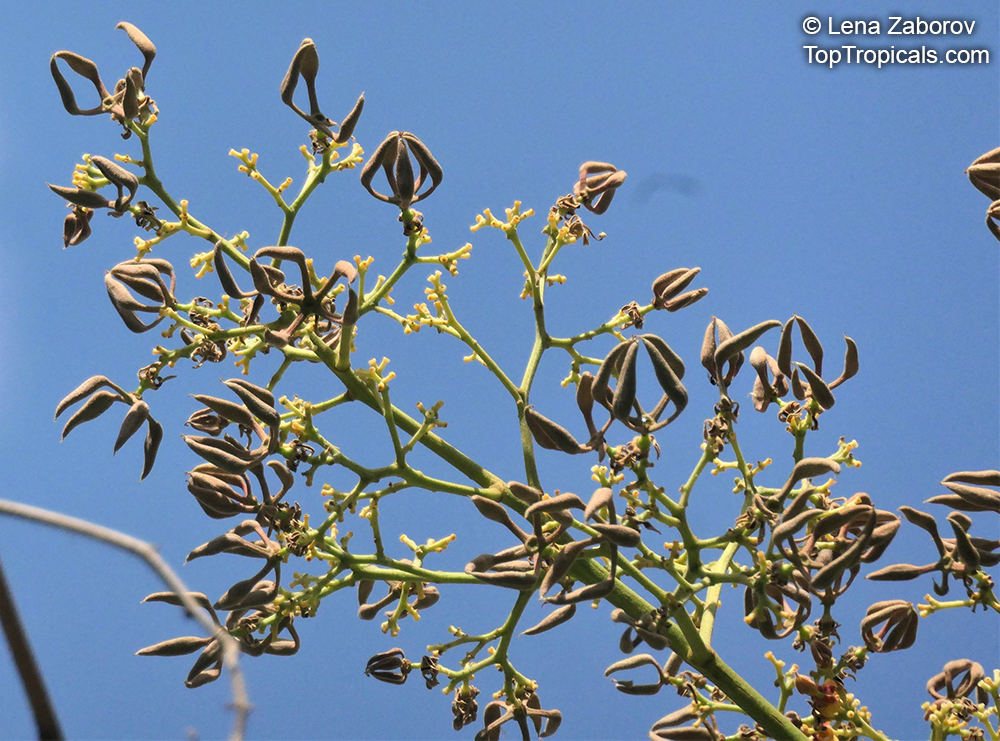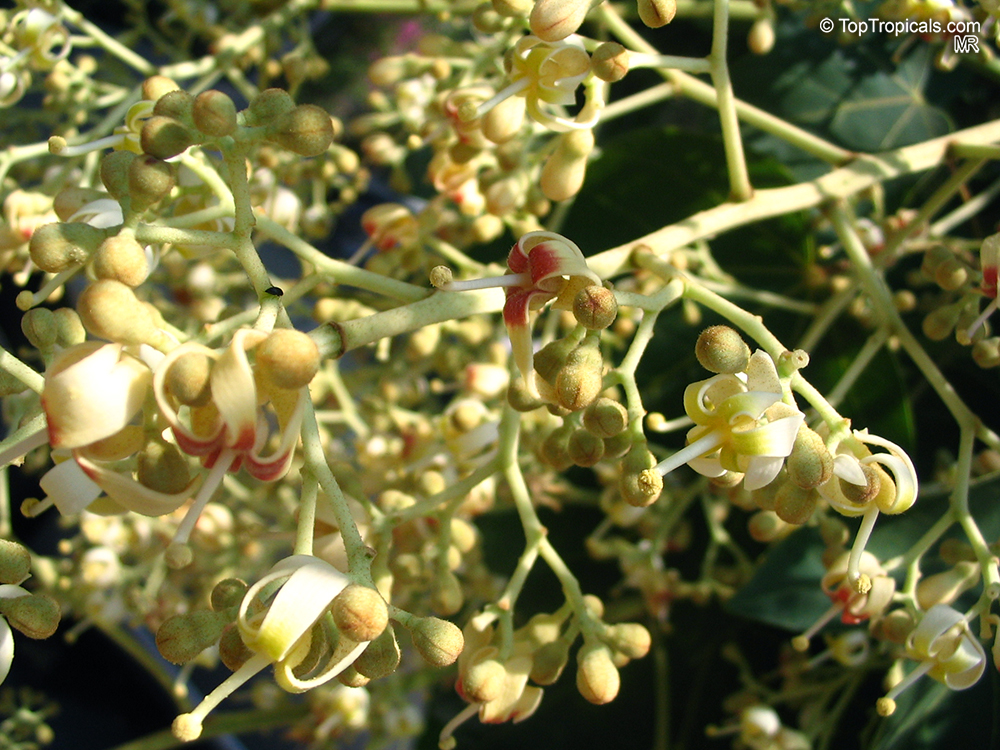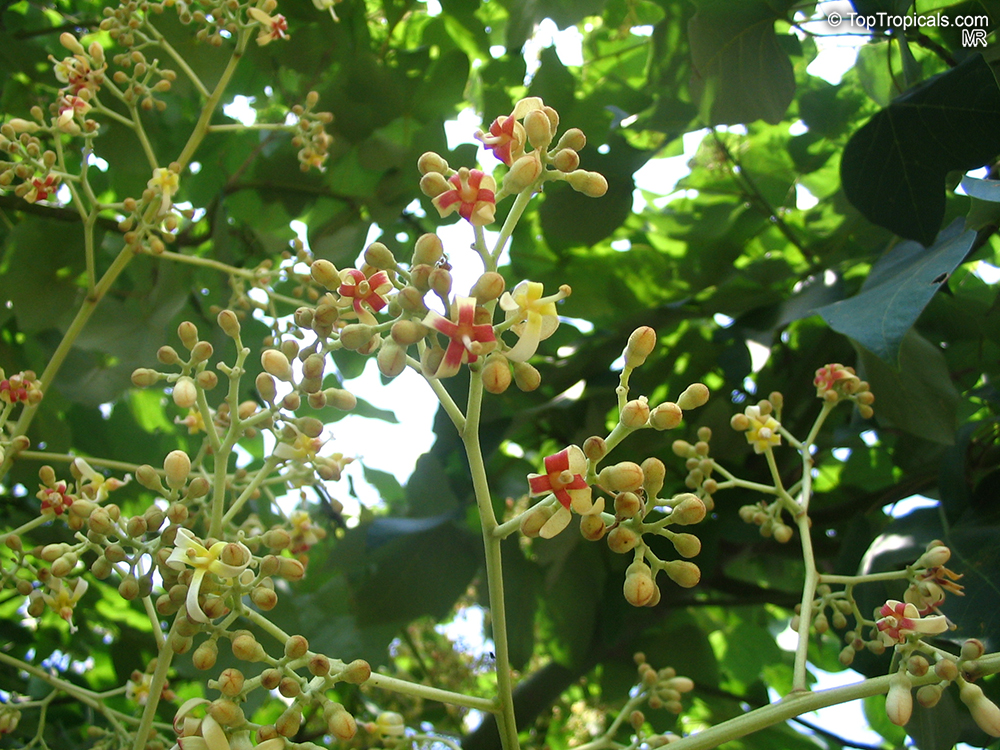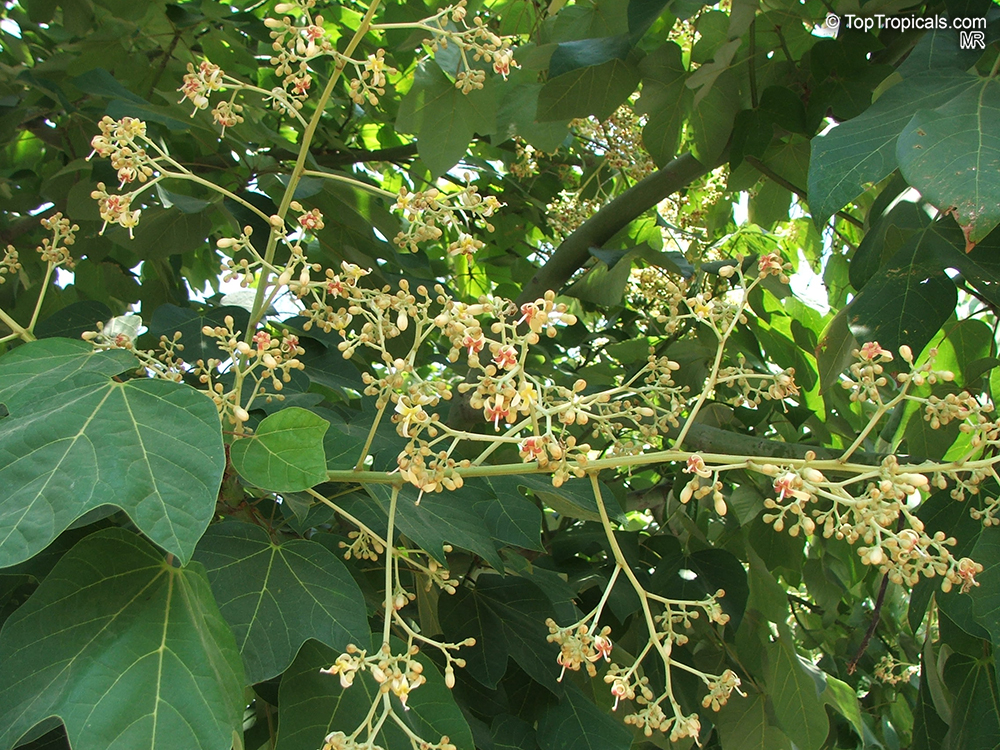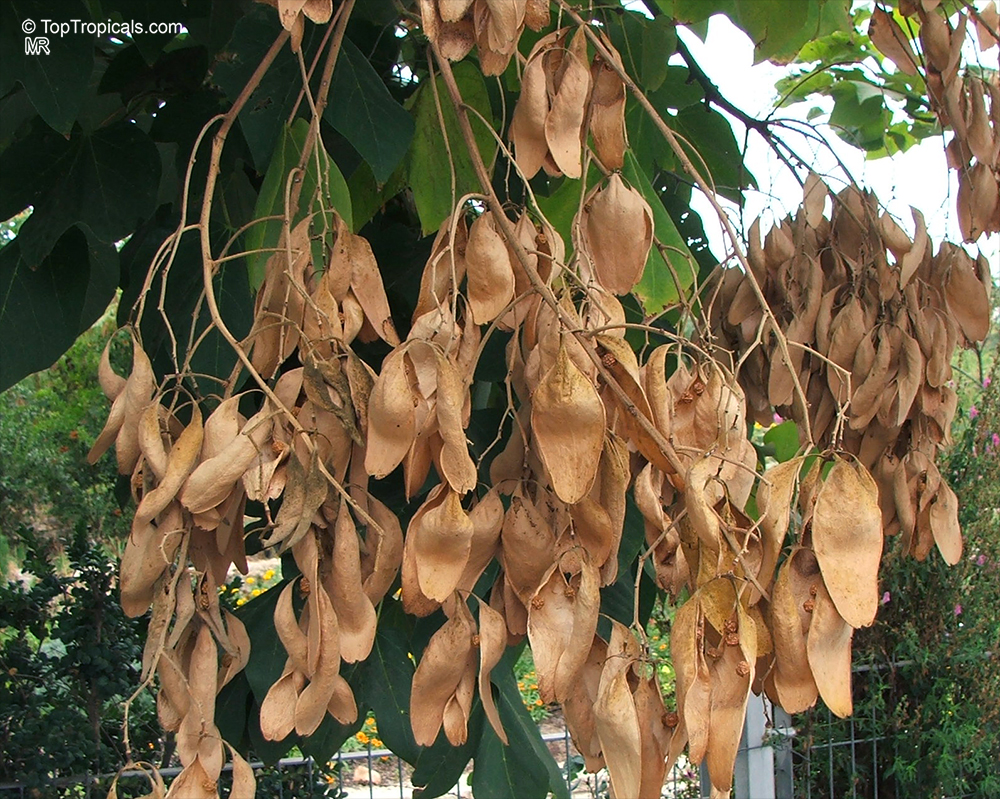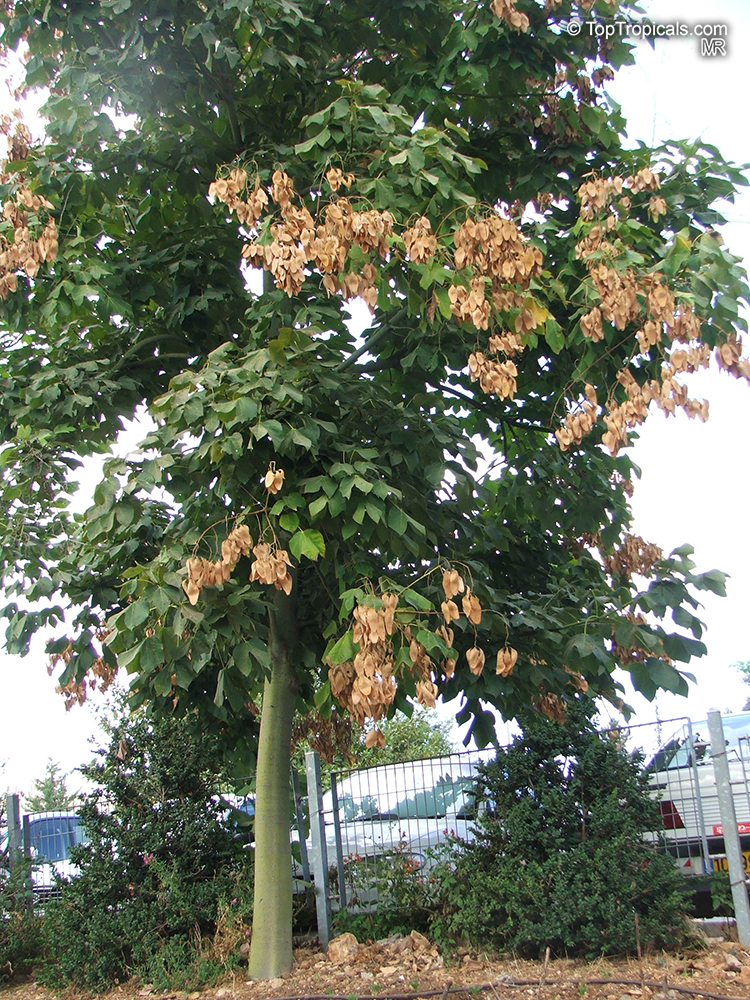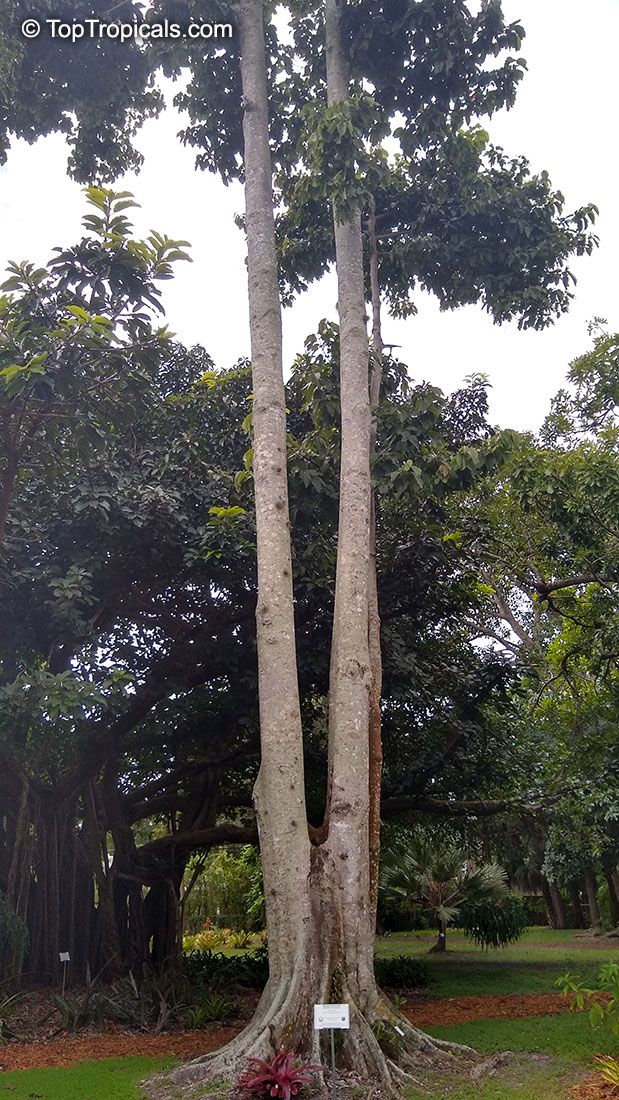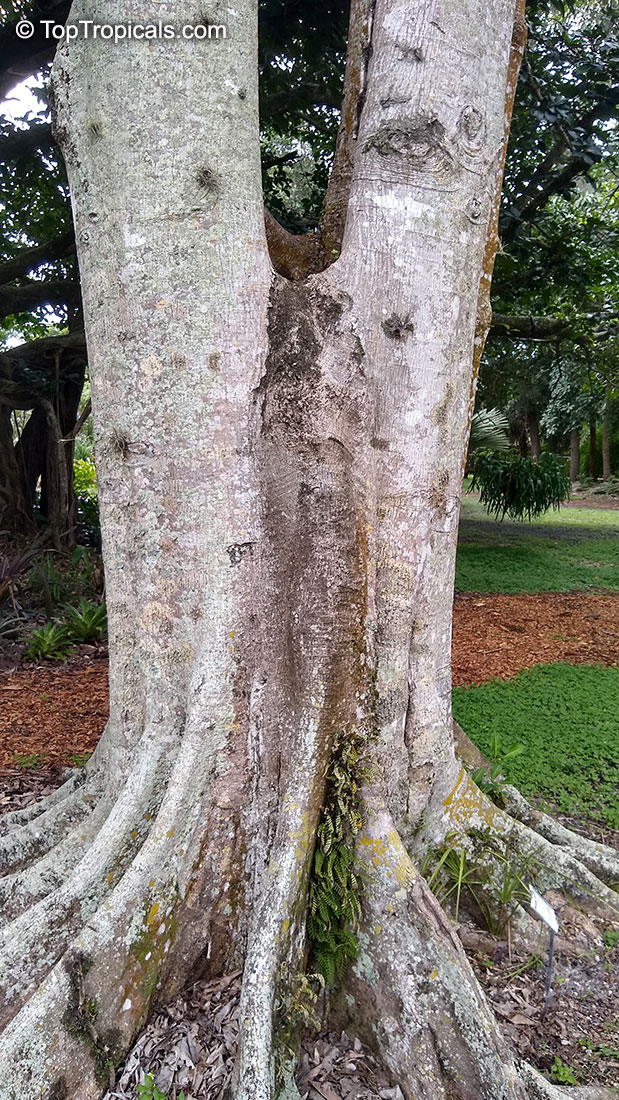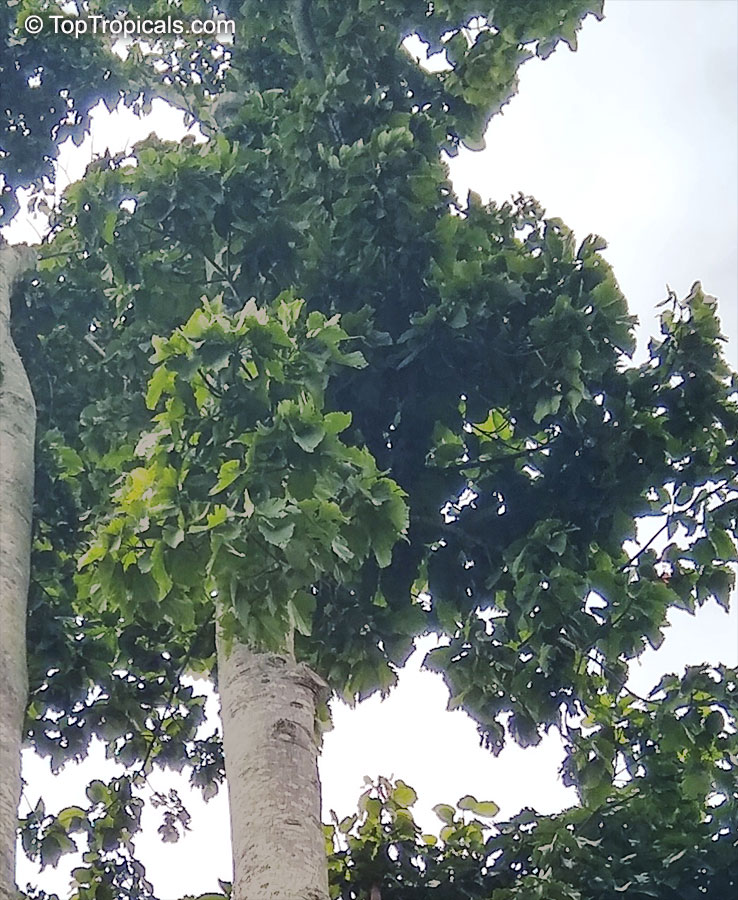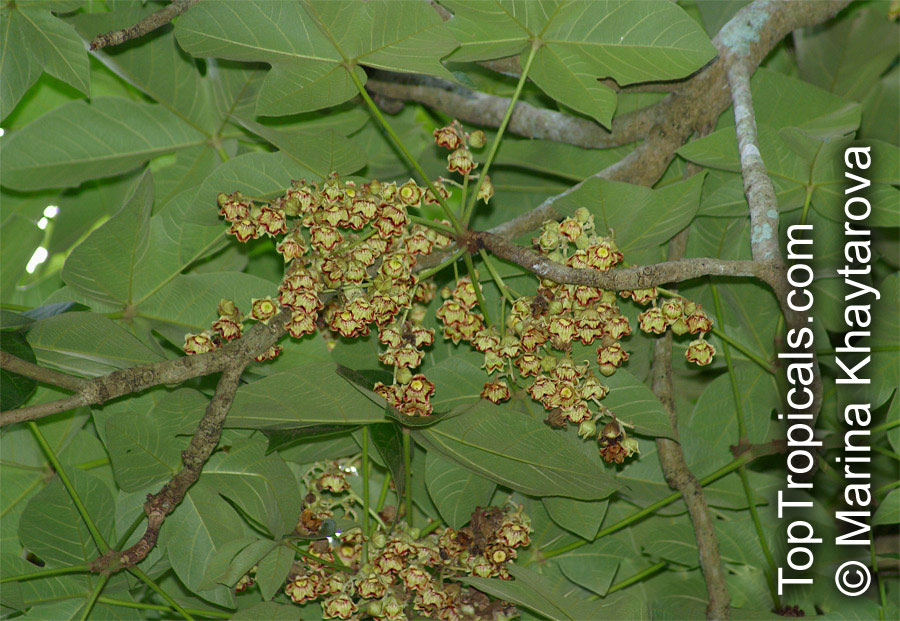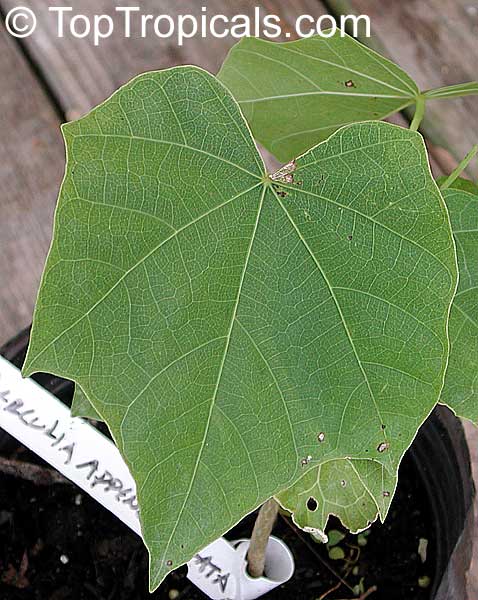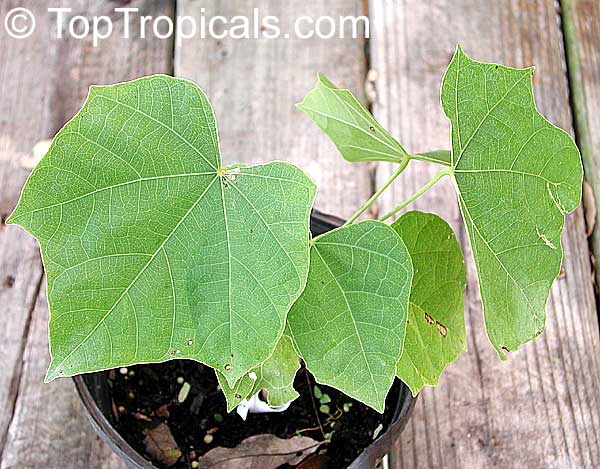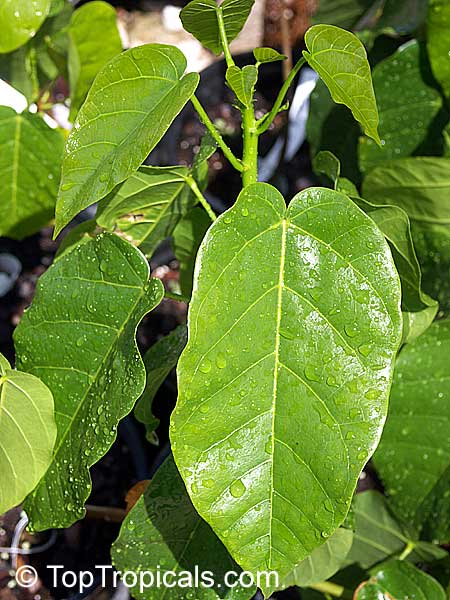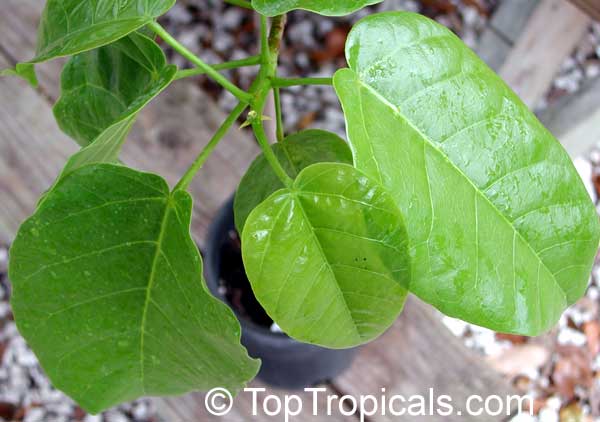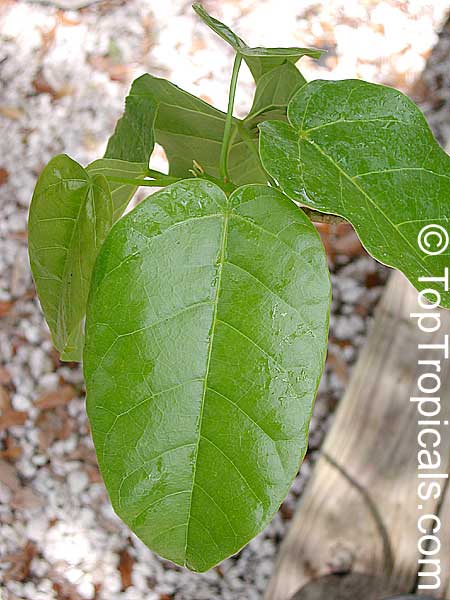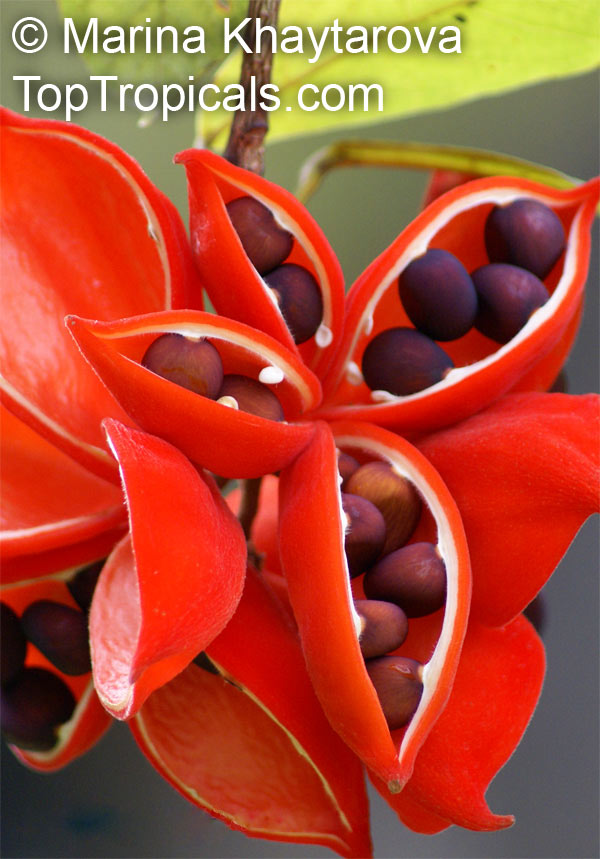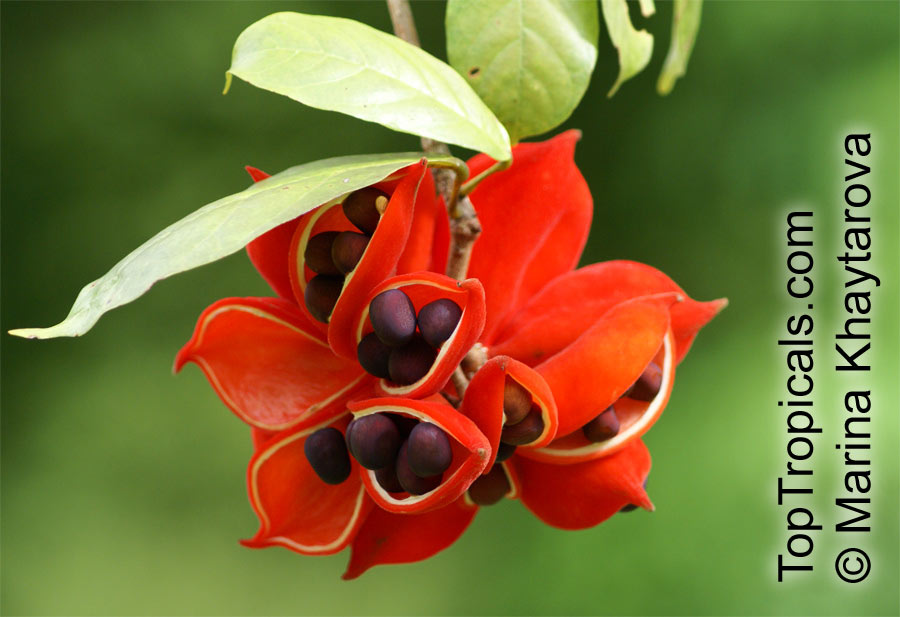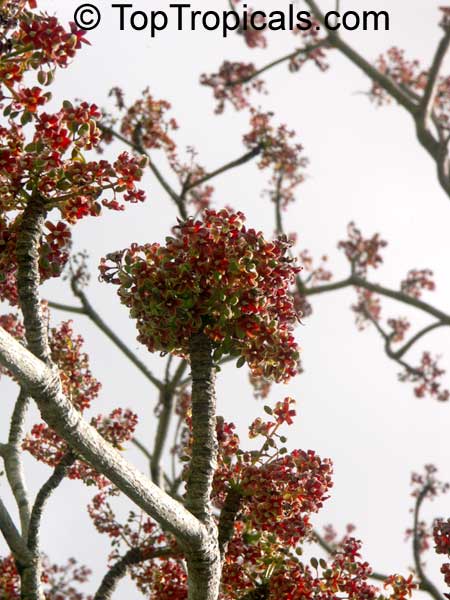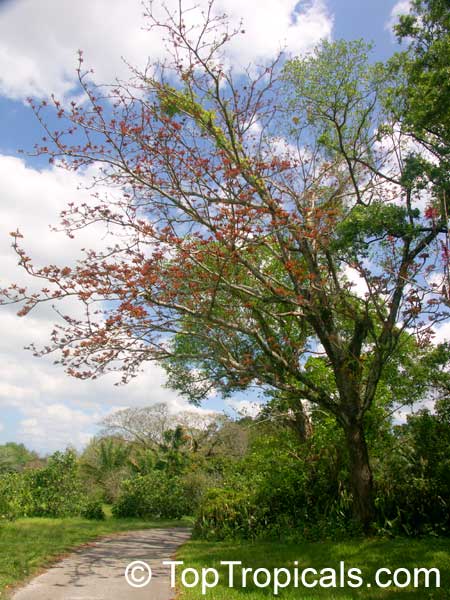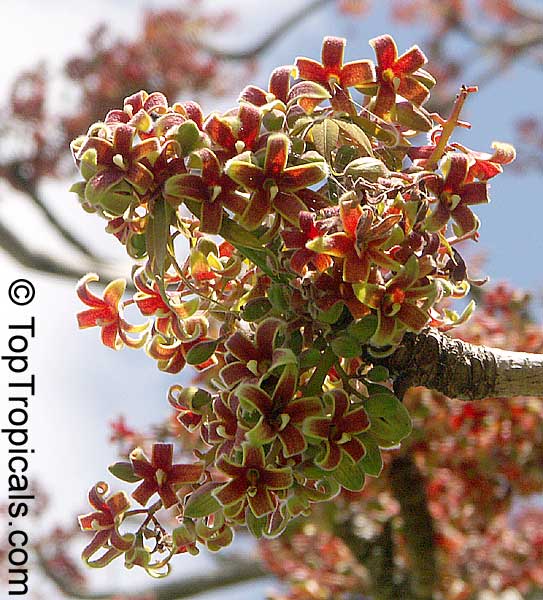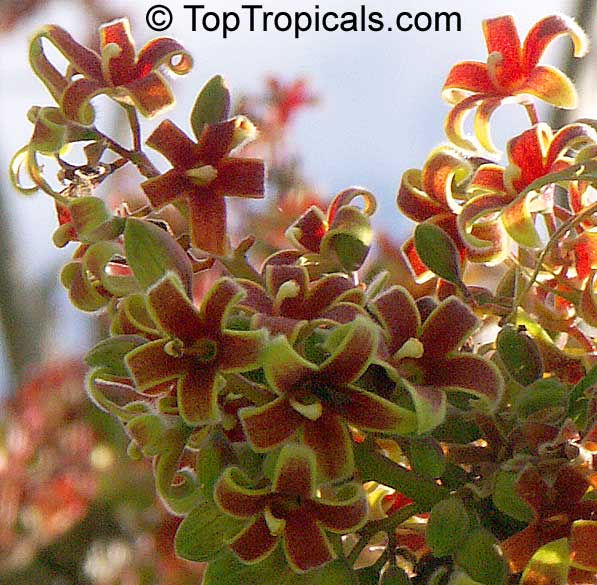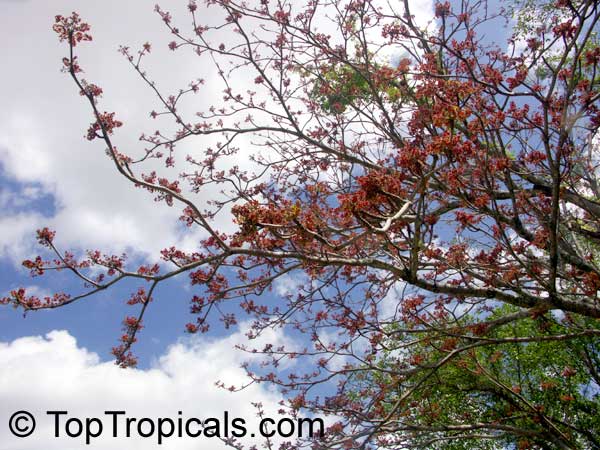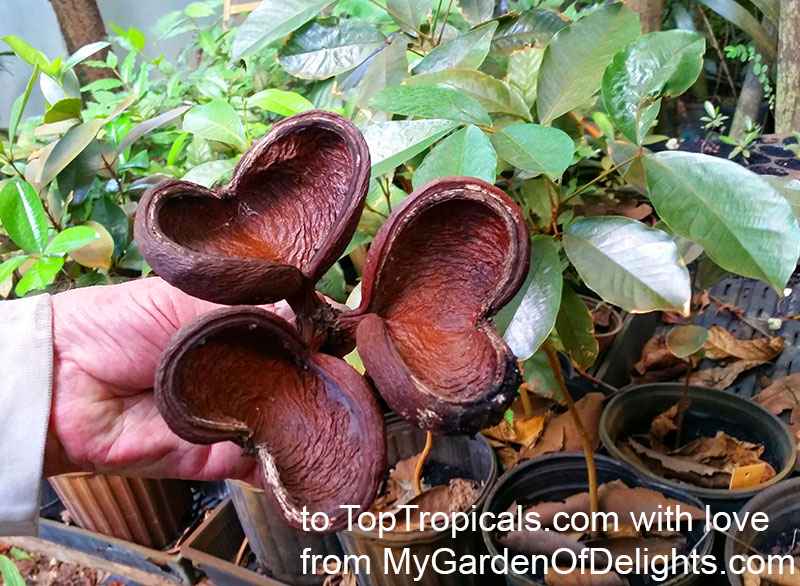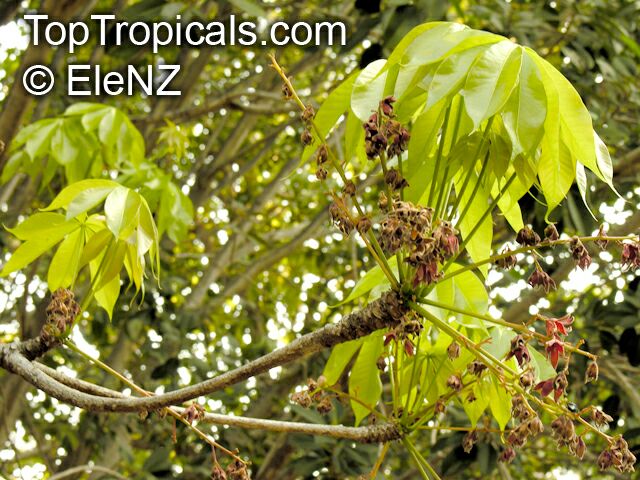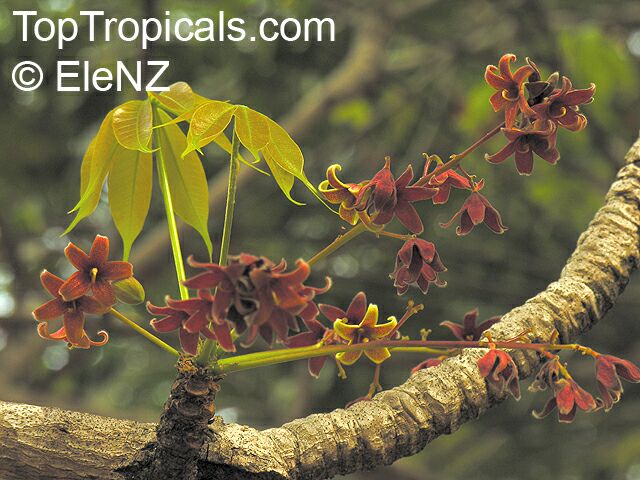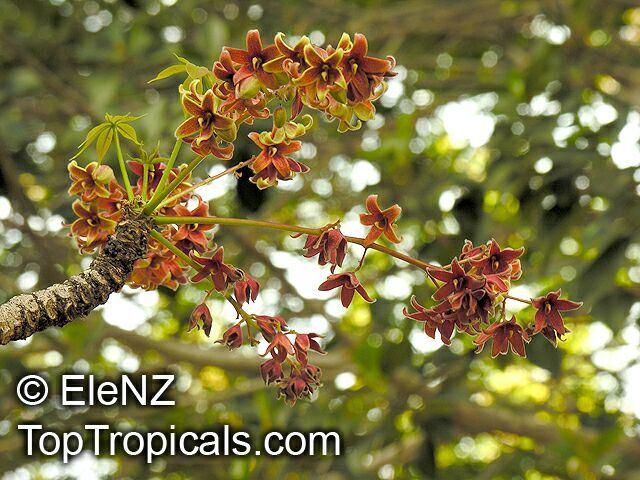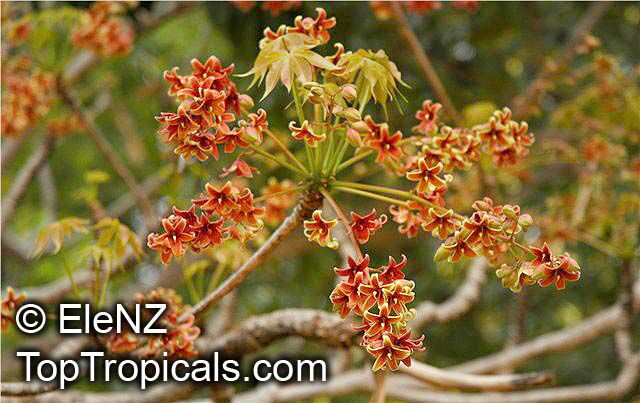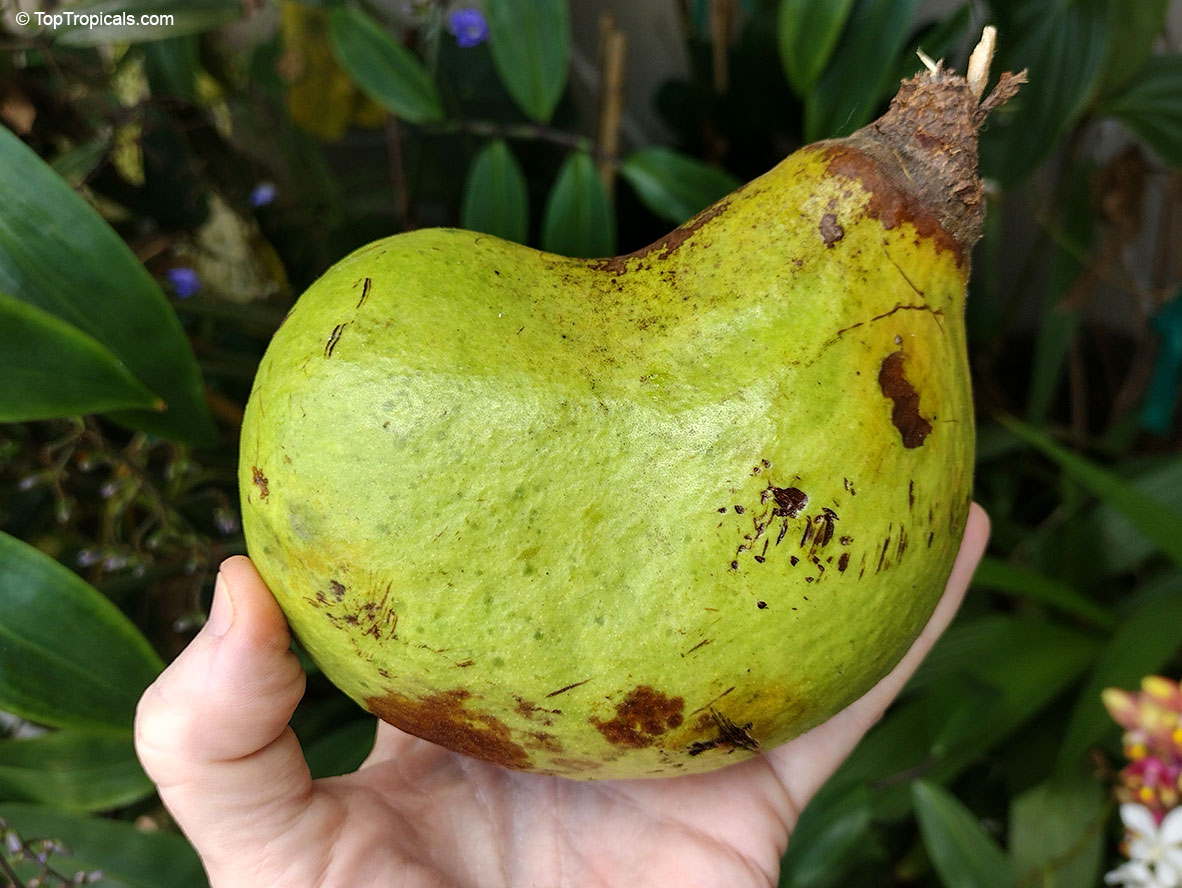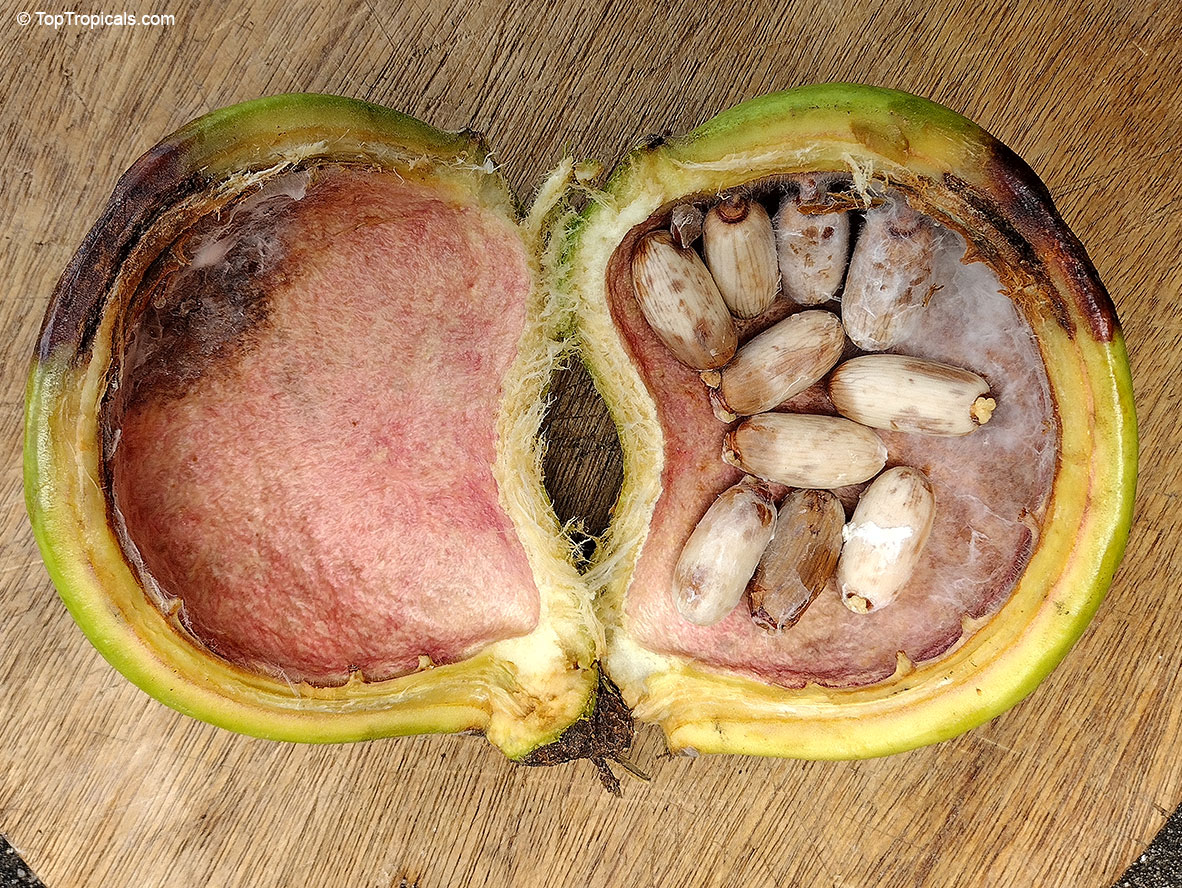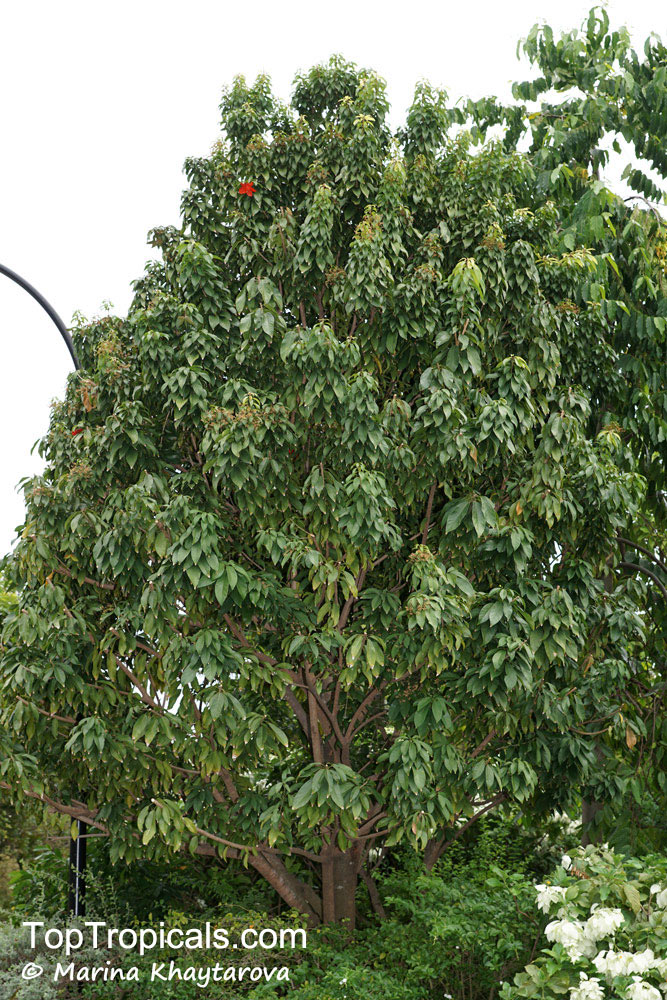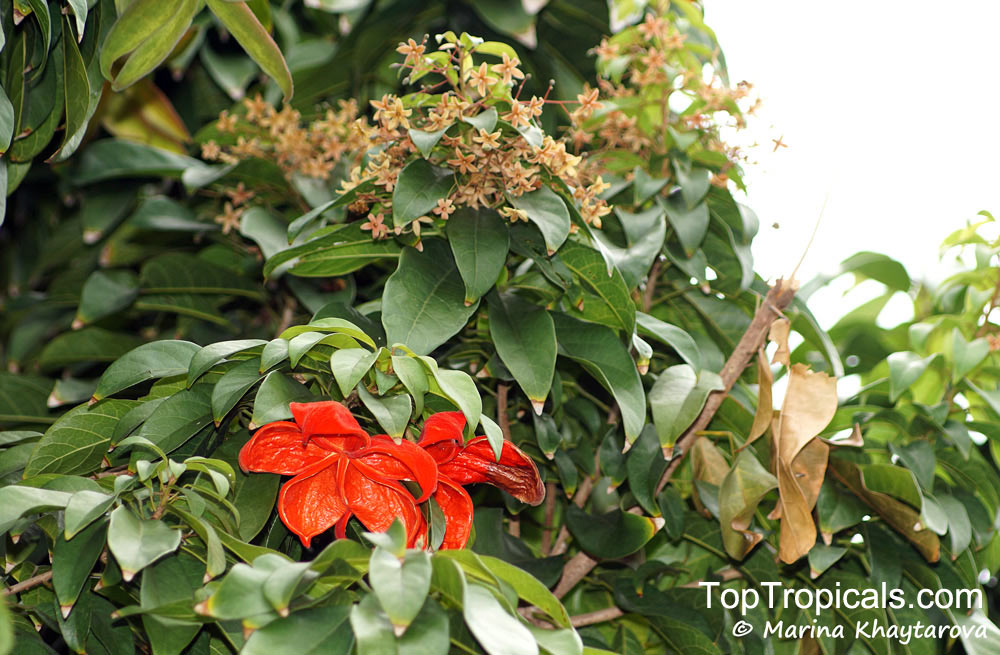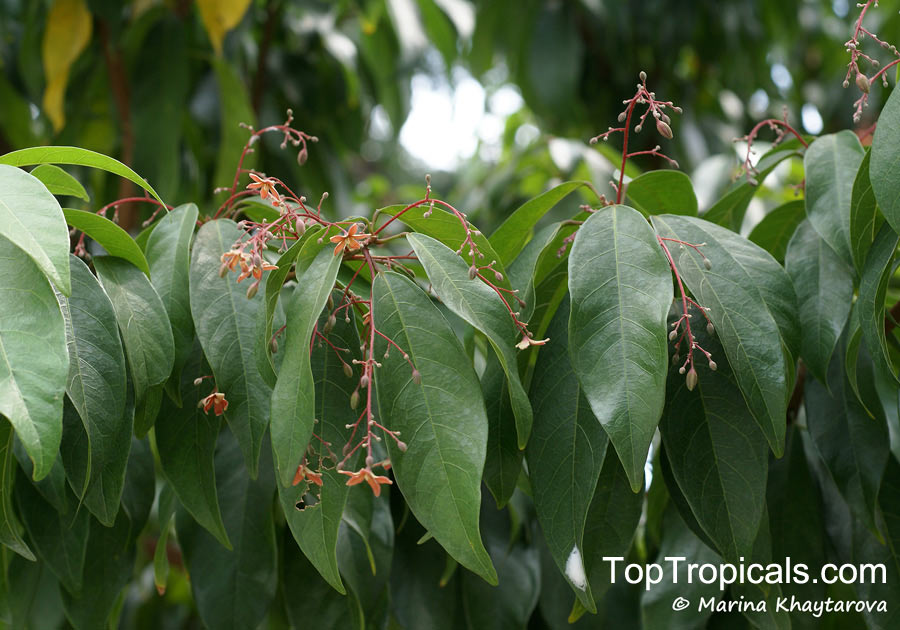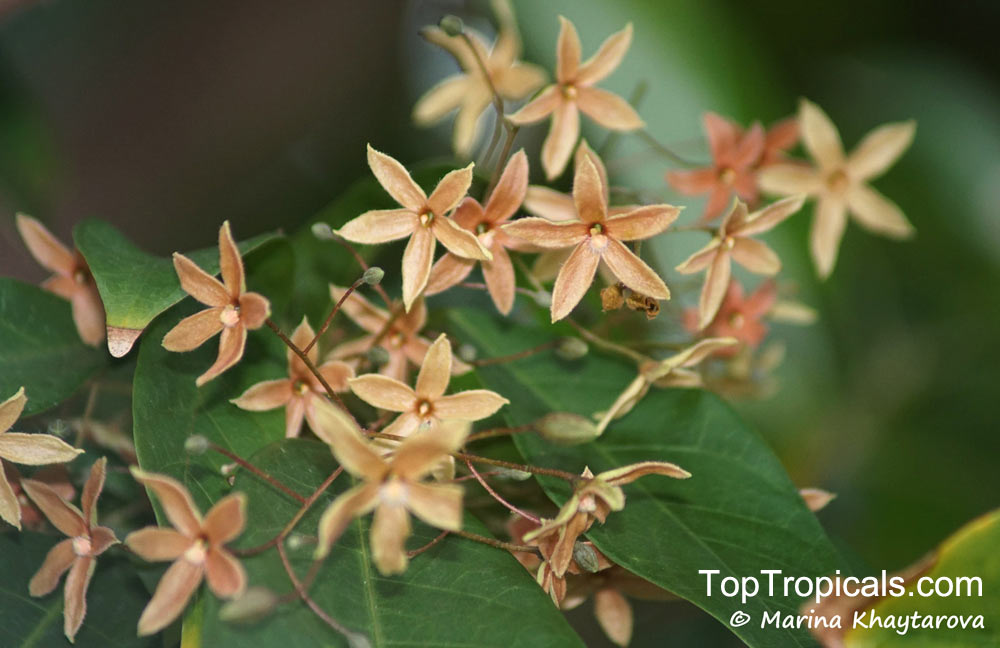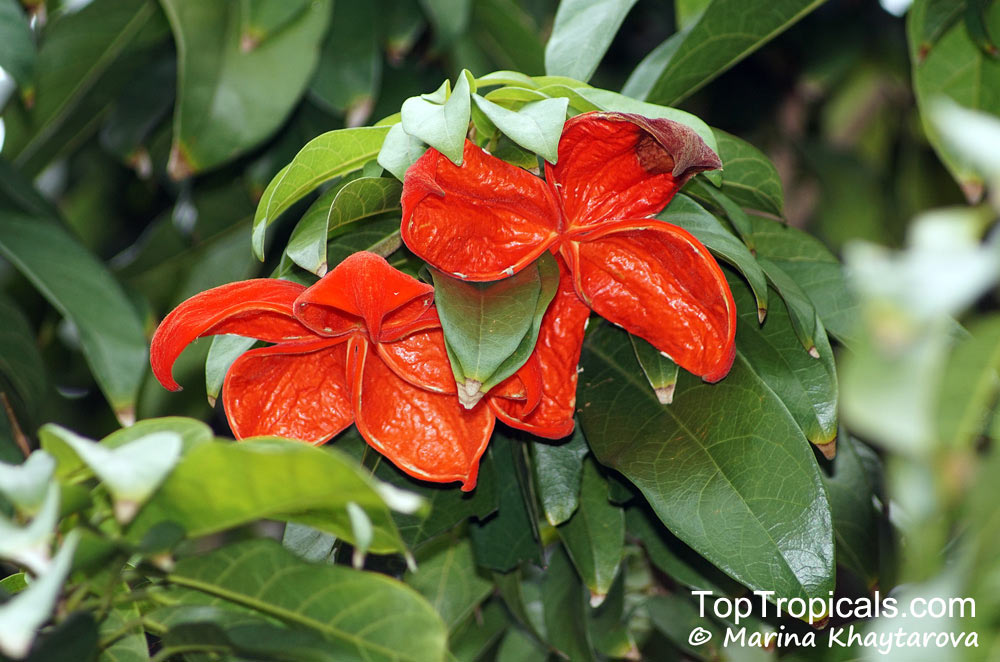Sterculia - Plant Encyclopedia Results
Top Tropicals Plant Encyclopedia
| Number of plants found: 21 | Next | 
|
Go to page: | 1 | 2 | 3 |
Botanical names: Brachychiton australis, Sterculia trichosiphon
Common name: Broad Leaved Bottletree
Family: Malvaceae
Subfamily: Sterculioideae
Origin: Australia









A fast growing shade deciduous tree. Drought-tolerant; suitable for xeriscaping.
Botanical names: Firmiana colorata, Sterculia colorata
Common names: Colored Sterculia, Bonfire tree, Scarlet Sterculia, Iwil-iwil, Indian Almond
Family: Malvaceae
Subfamily: Sterculioideae
Origin: India, Thailand









Firmiana colorata, or Scarlet Sterculia, is a deciduous, small to medium-sized tree native to India and Thailand. It prefers organically-rich, sandy soil with plenty of moisture. This tree produces red flowers that hang down from the ends of its branches in short and dense panicles. The flowers are covered in a fine, downy hair, giving them a soft, velvety look. During its flowering period, Firmiana colorata presents a spectacular sight with its orange-red flowers against its leafless state.
Growing between 10-20 feet tall, its hardy to zone 10. This tree requires full sun and organically-rich, sandy loam soil with plenty of moisture, yet it does not handle overwatering well.
When in bloom, Firmiana colorata produces red and crimson flowers with a glossy, vinous hue. These flowers hang down from the ends of the tree's branches in short, dense panicles. They are covered in a fine downy hair, giving them a soft, velvety look. This flower is especially attractive to hummingbirds and butterflies, making it a popular choice for gardeners.
Young trees are often grown from a bulb or caudex and can even be grown as a bonsai plant. When planted in the ground, this tree grows into a large tree. During winter it often loses its leaves, and goes dormant. When flowering, it can be a stunning sight with its orange-red flowers against its bare branches.
Botanical names: Firmiana simplex, Sterculia platanifolia
Common name: Chinese Parasol Tree
Family: Malvaceae
Subfamily: Sterculioideae
Origin: China











Flowers are tan-yellow in color, they are panicles on the terminal ends of the branches. Flowering occurs from mid June to early July. Fruit are pea sized, attached to leafy carpels that split open after flowering. Provides dense shade, popular as a street tree in Asia.
Botanical names: Pterygota alata, Sterculia alata
Common name: Buddha Coconut
Family: Malvaceae
Origin: East Asia






Botanical names: Sterculia apetala, Helicteres apetala, Sterculia carthaginensis, Sterculia chicha
Common names: Bellota, Panama Tree
Family: Malvaceae
Subfamily: Sterculioideae
Origin: Panama






Botanical name: Sterculia appendiculata
Common names: Mgude, Yellow barked Sterculia
Family: Malvaceae
Subfamily: Sterculioideae
Origin: East Africa





One of the most characteristic and tallest trees of this vegetation type, it is a protected species and in natural habitat many of these large, yellow-barked trees have been left standing amid cultivation and grazing land, thus indicating how widespread the Sterculia forests used to be.
Botanical name: Sterculia ceramica
Common name: Lanyu Sterculia
Family: Malvaceae
Subfamily: Sterculioideae
Origin: Taiwan





A small evergreen tree. Leaves alternate, chartaceous, oblong, apex acute. Inflorescence panicles, pubescent. Follicles sickle-like, with 1-2 seeds. An ornamental or avenue tree.
Botanical names: Sterculia coccinea, Sterculia lanceolata var. coccinea, Sterculia hamiltonii
Common names: Shrub Sterculia, Kelumpang
Family: Malvaceae
Subfamily: Sterculioideae
Origin: Southeast Asia





Botanical name: Sterculia foetida
Common names: Peon, Indian Almond, Hazel Sterculia, Java Olive, Skunk Tree
Family: Malvaceae
Subfamily: Sterculioideae
Origin: Tropical Asia, Australia









Large tree of Old World tropics having foul-smelling orange-red blossoms followed by red pods enclosing oil-rich seeds sometimes used as food. Roasted seeds are edible. Seeds are above-average for angiospermous plants for the amino acids. It has unisexual flowers with a single perianth whorl constituting a valvate calyx. Female flower has anthers of vestigial stamens around the base of the stalked ovary.
Botanical names: Sterculia lanceifolia, Sterculia roxburghii
Common name: Lanceleaf Sterculia
Family: Malvaceae
Subfamily: Sterculioideae
Origin: Indo-China






This small tree is native to Indo-China, and is tolerant of a variety of environmental conditions. It is a deciduous species, growing to a height of 10-20 ft and producing yellow to orange flowers in springtime. Normally found in USDA zones 9-11 both in warm and cold climates, Sterculia lanceifolia (Lanceleaf Sterculia) requires full sunlight and protection from strong winds. It has a moderate drought tolerance when planted in a sandy soil and requires regular water when planted in heavy clay, during both the summer and winter months. This particular species can adapt to most soil types.
Sterculia lanceifolia is a great choice for gardens and landscapes, as it does not require too much pruning or maintenance. Additionally, it can be grown in containers so long as its pot has ample drainage holes. During winter months, Sterculia lanceifolia should be kept in a warm area, such as sheltered indoors or a greenhouse.
This plant is valued not only for its hardiness and show of color; it also produces edible fruits which are actually healthy and nutritious. The fruit is oval in shape and deep maroon in color. Inside, the seed has an edible kernel which is rich in fatty acids, minerals, as well as vitamins. In traditional medicinal remedies, it is used to treat fever, colds, and gastrointestinal issues. The fruits can be also picked and eaten fresh or dried and served with porridge, rice, and other dishes. It can produce multiple fruits per season.
Health benefits aside, the fruits of Sterculia lanceifolia are valued for their nutty flavor. Each fruit usually contains one or two seeds, which can be eaten along with the pulp or extracted to be used as a crunchy topping on salads or desserts. It is also a popular ingredient in desserts from South East Asia.
| Next |  |
Use link to repeat this search:
https://toptropicals.com/cgi-bin/garden_catalog/cat.cgi?find=Sterculia&search_op=and&keyword_op=and&language=e&number=10
&no_change_lang=1&user=tt&sale=1&first=0
